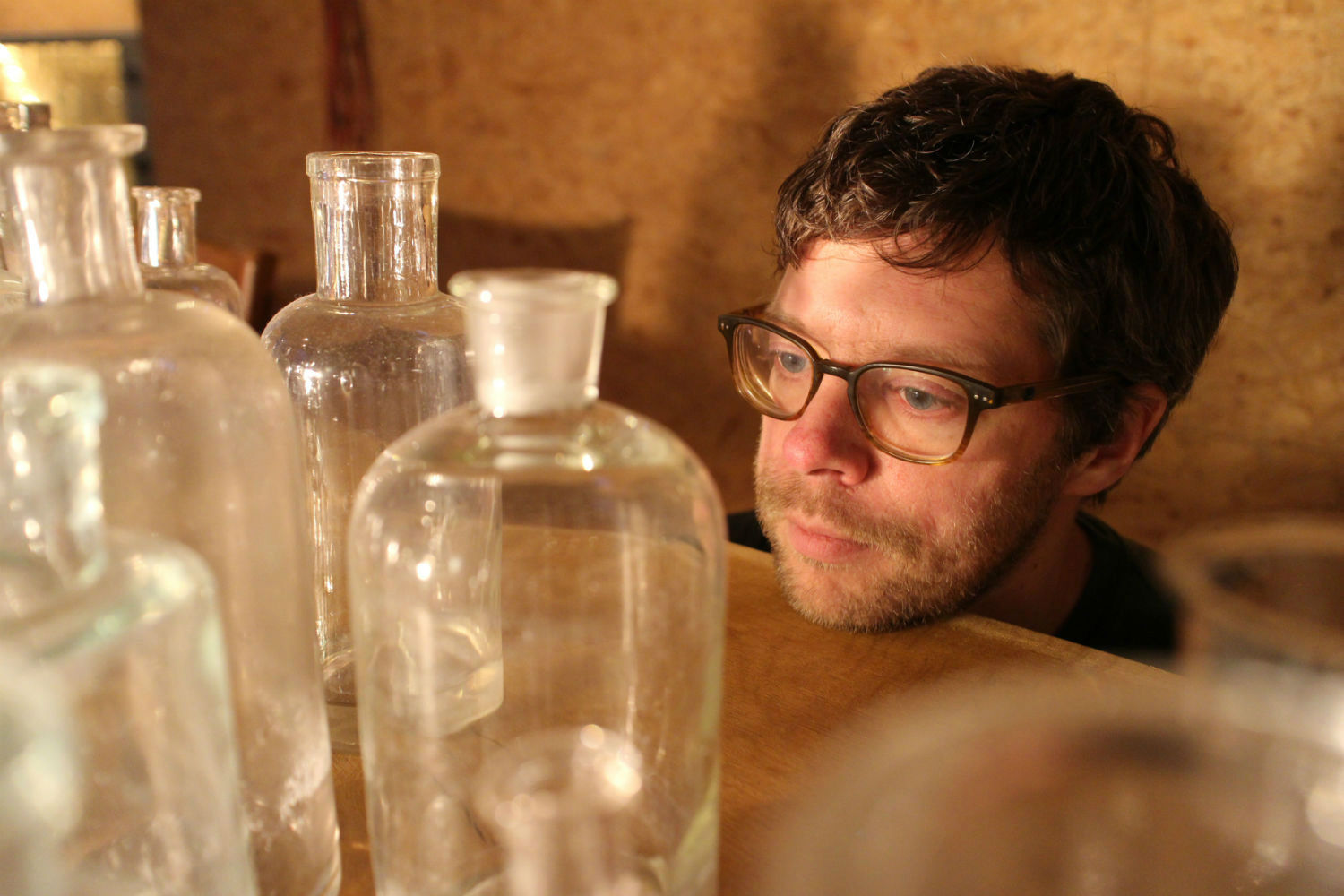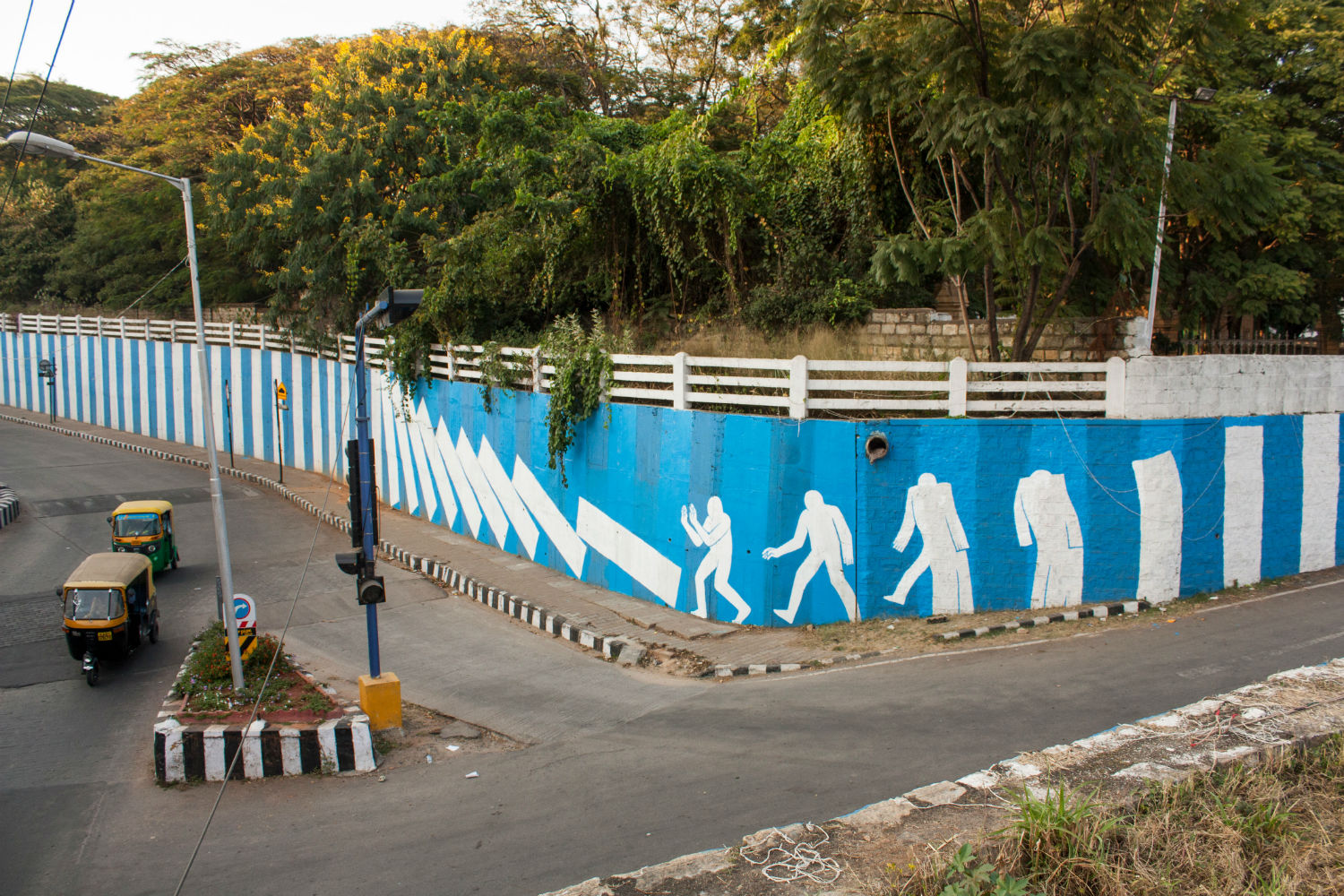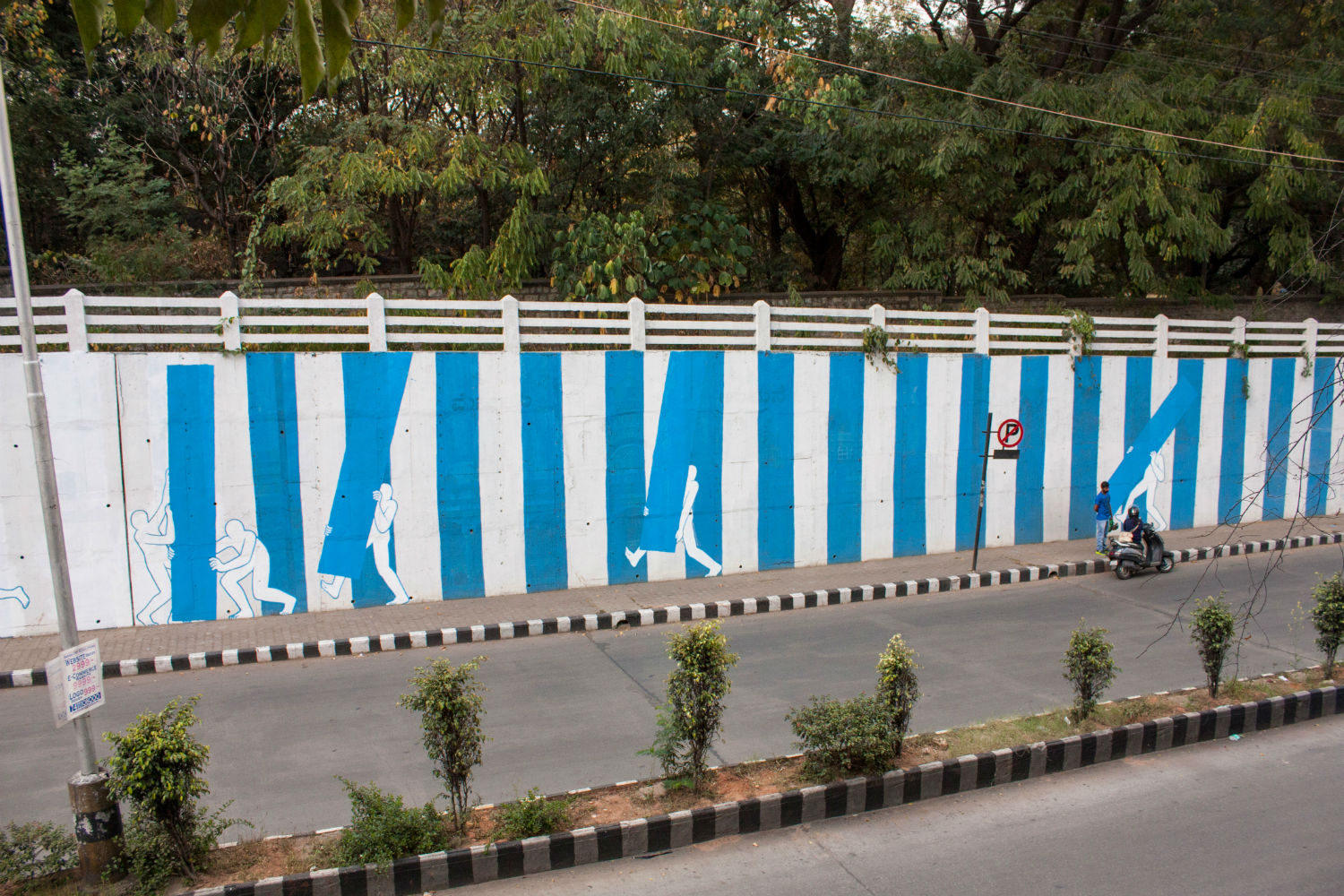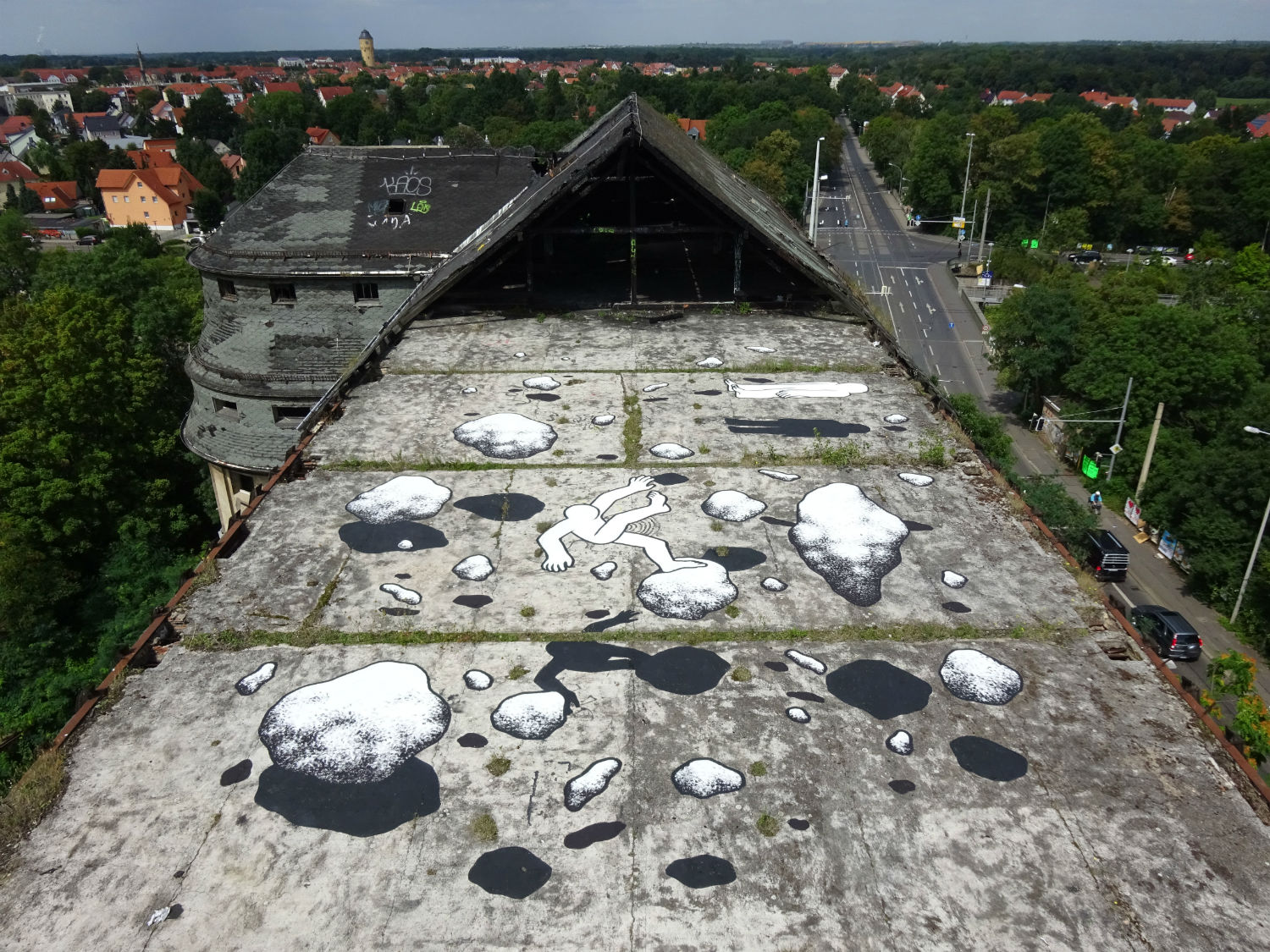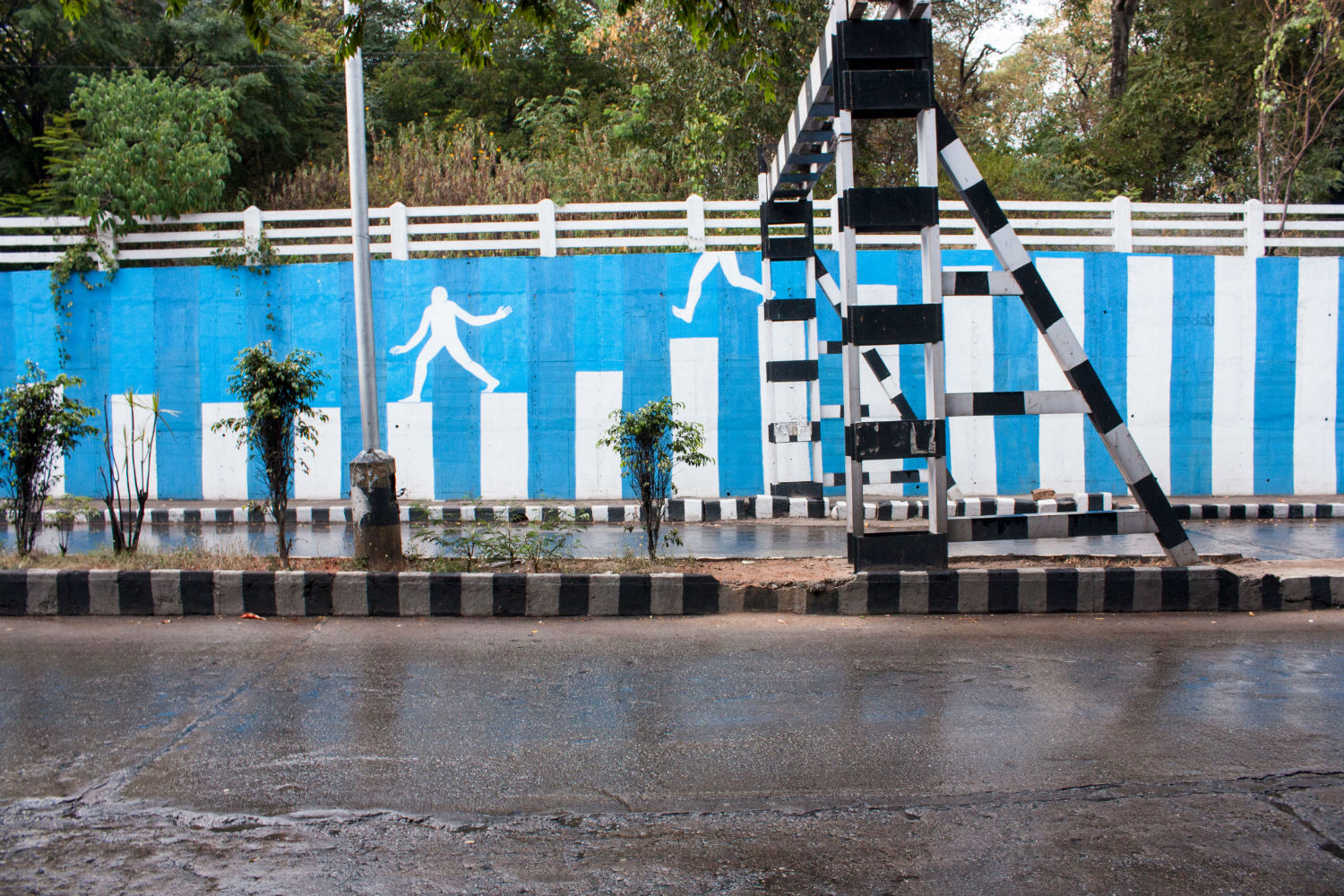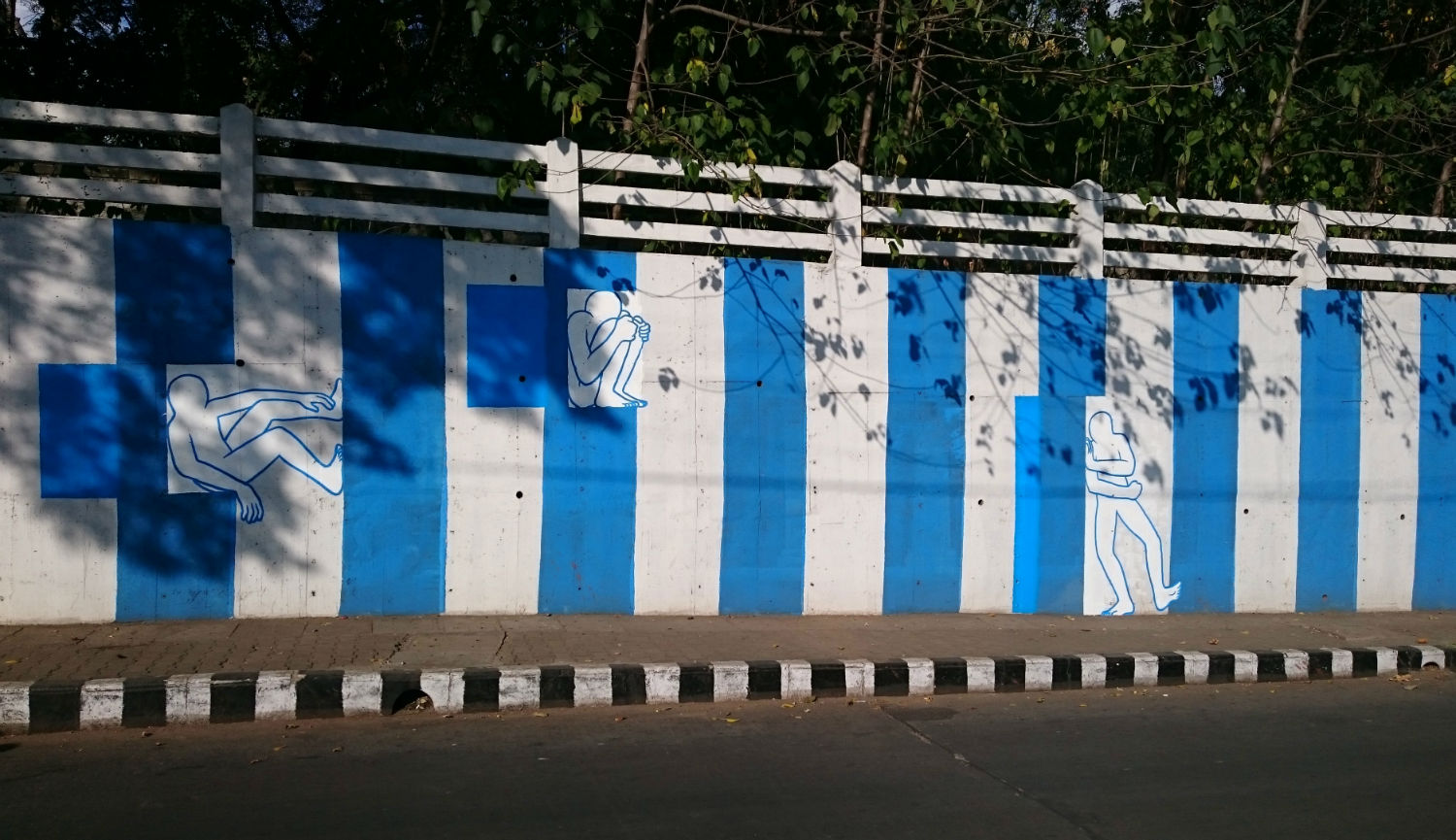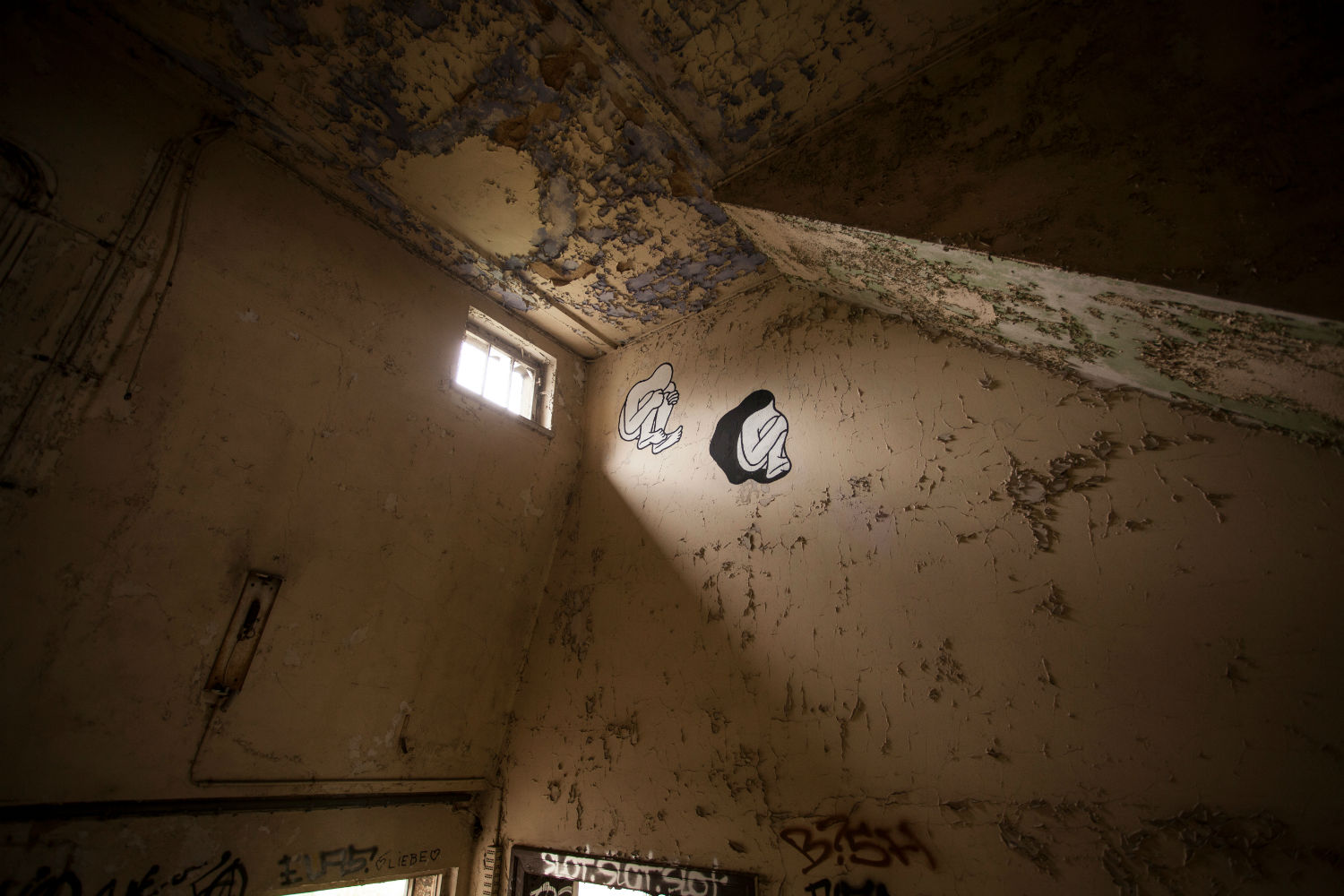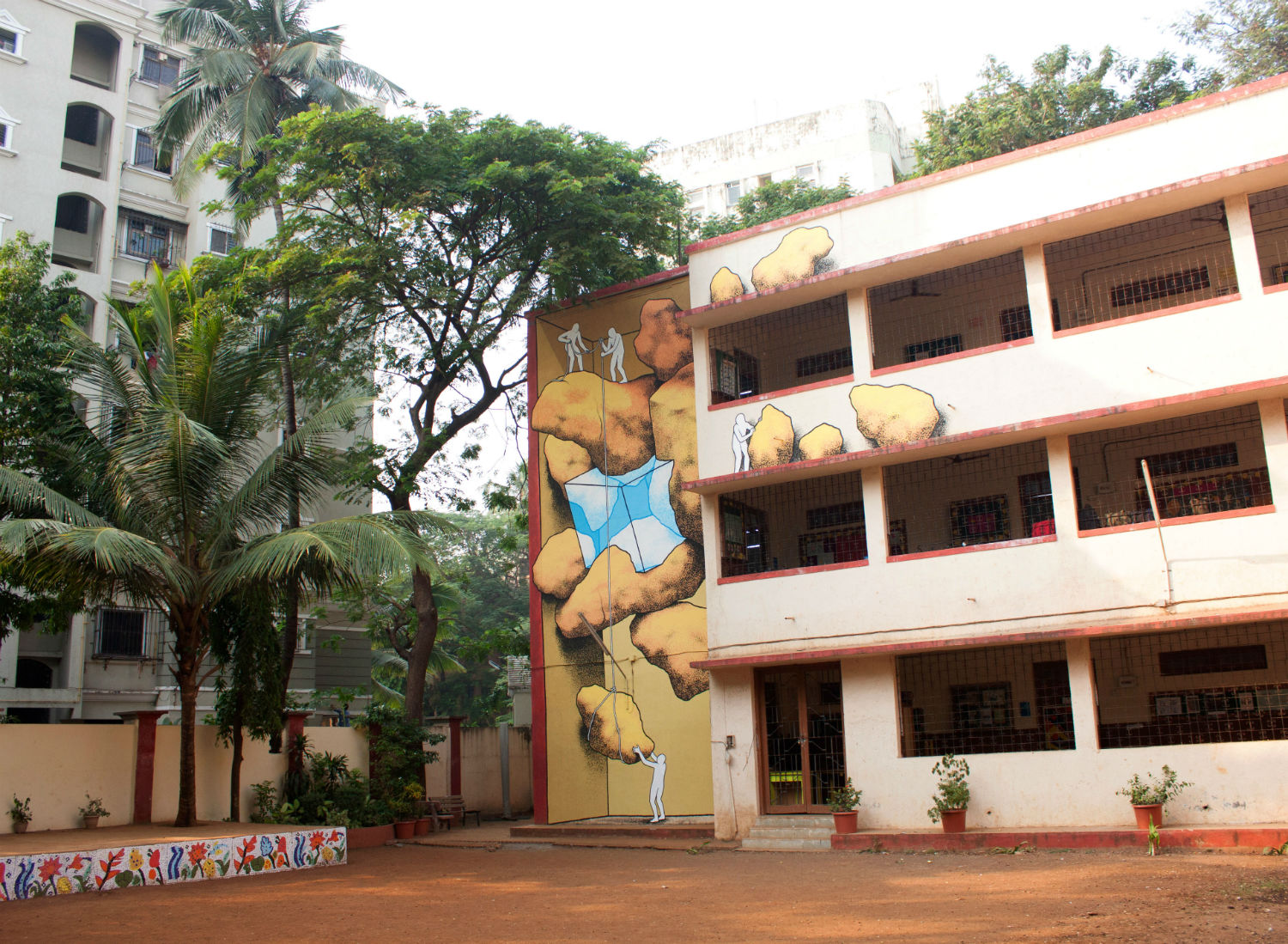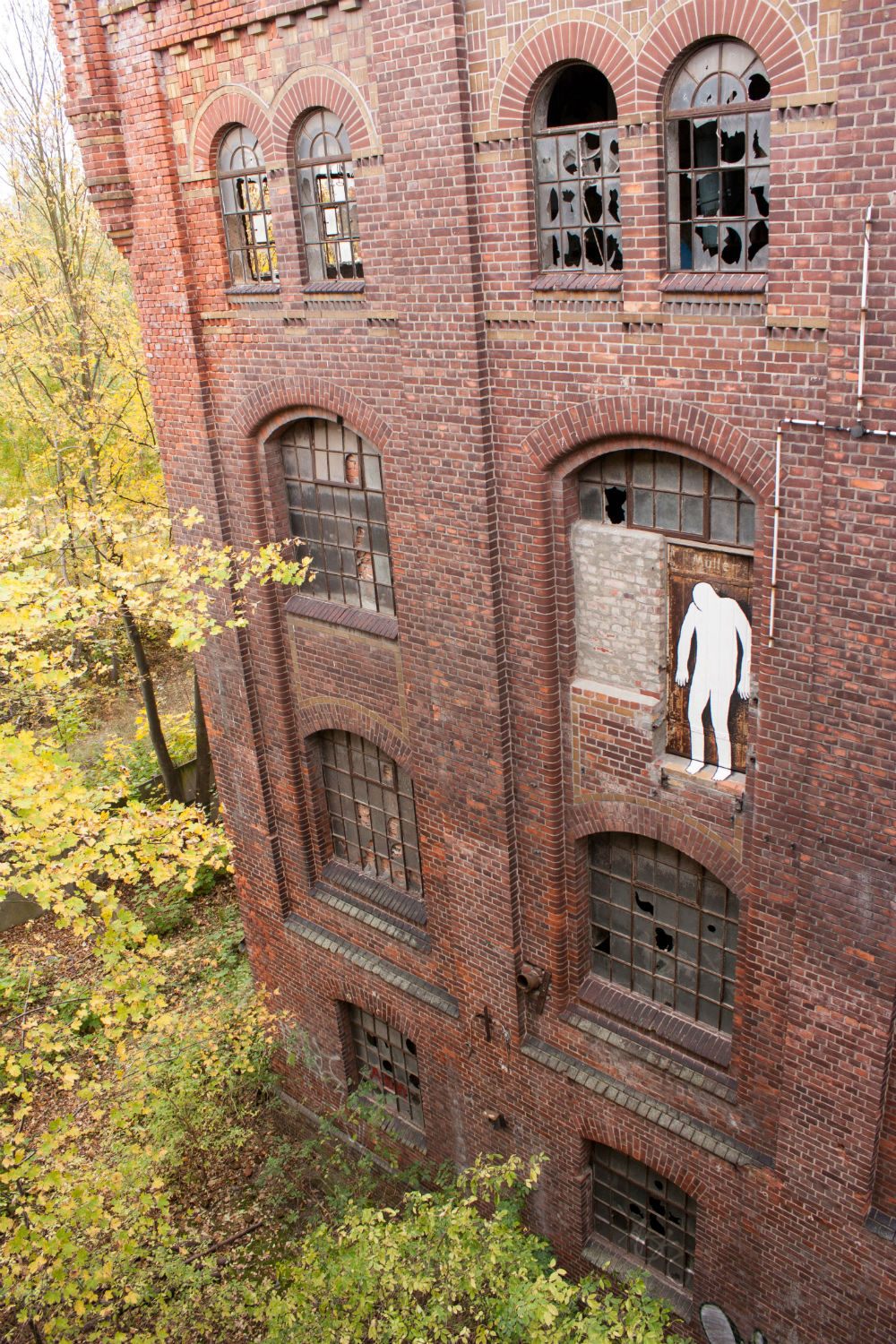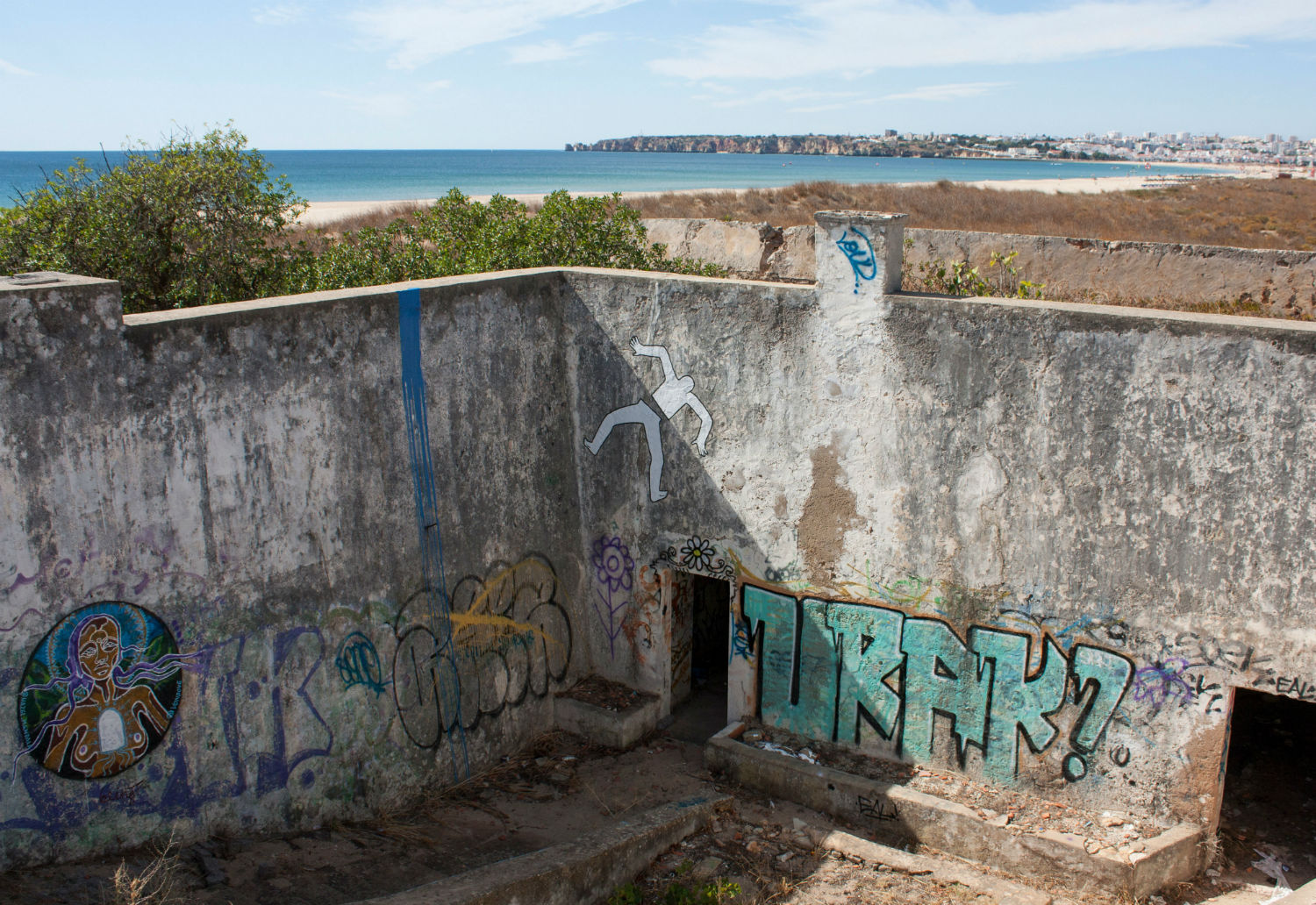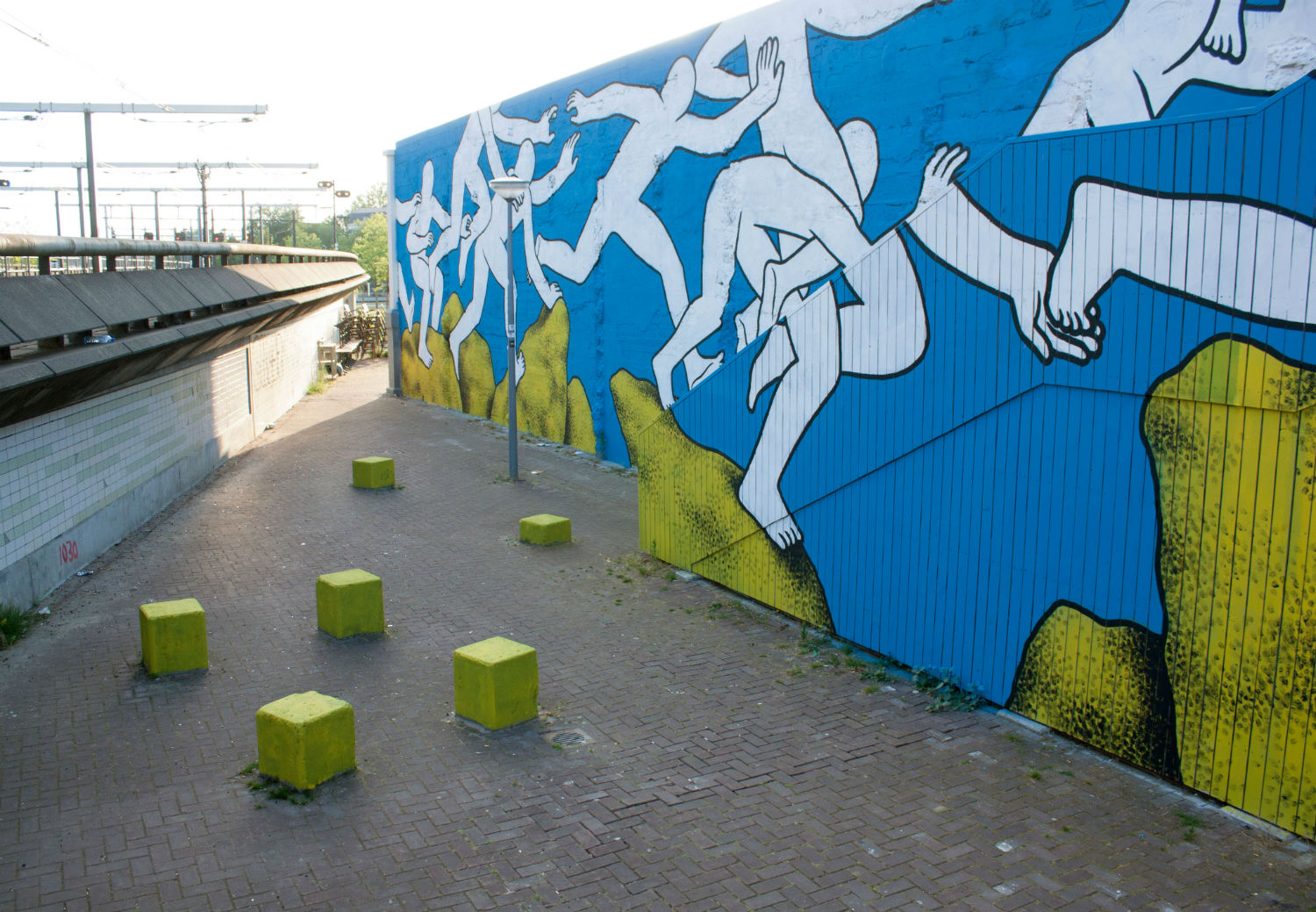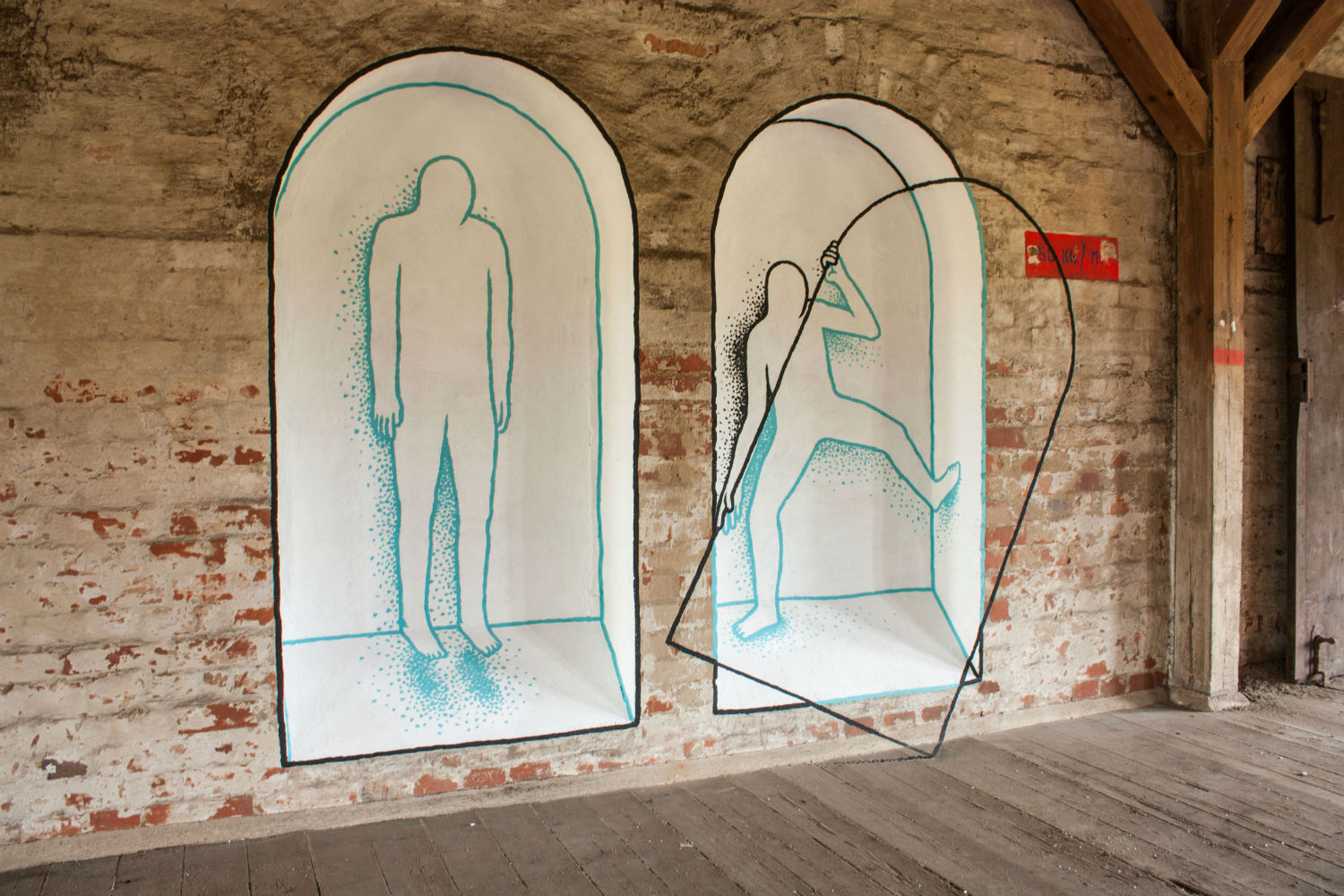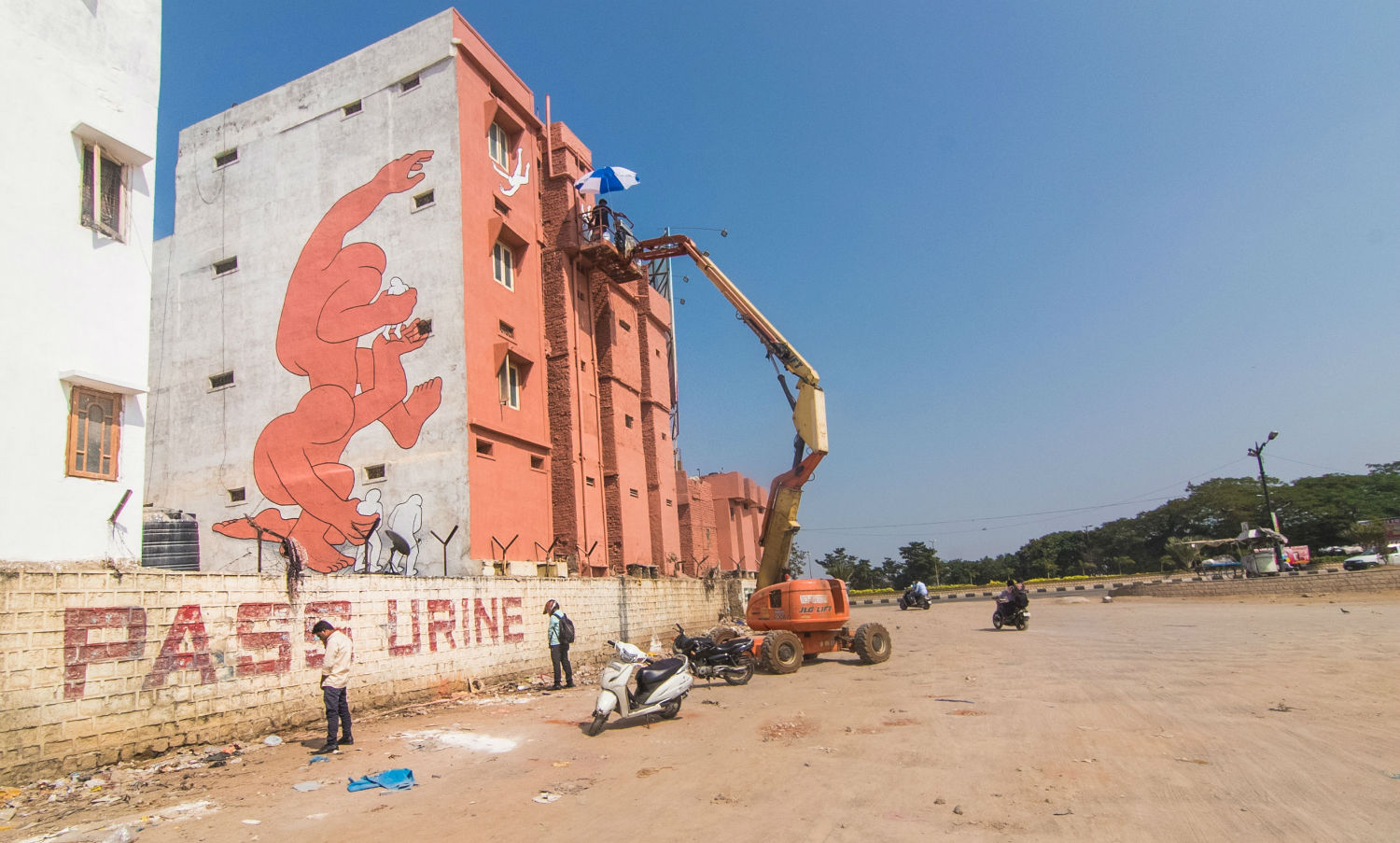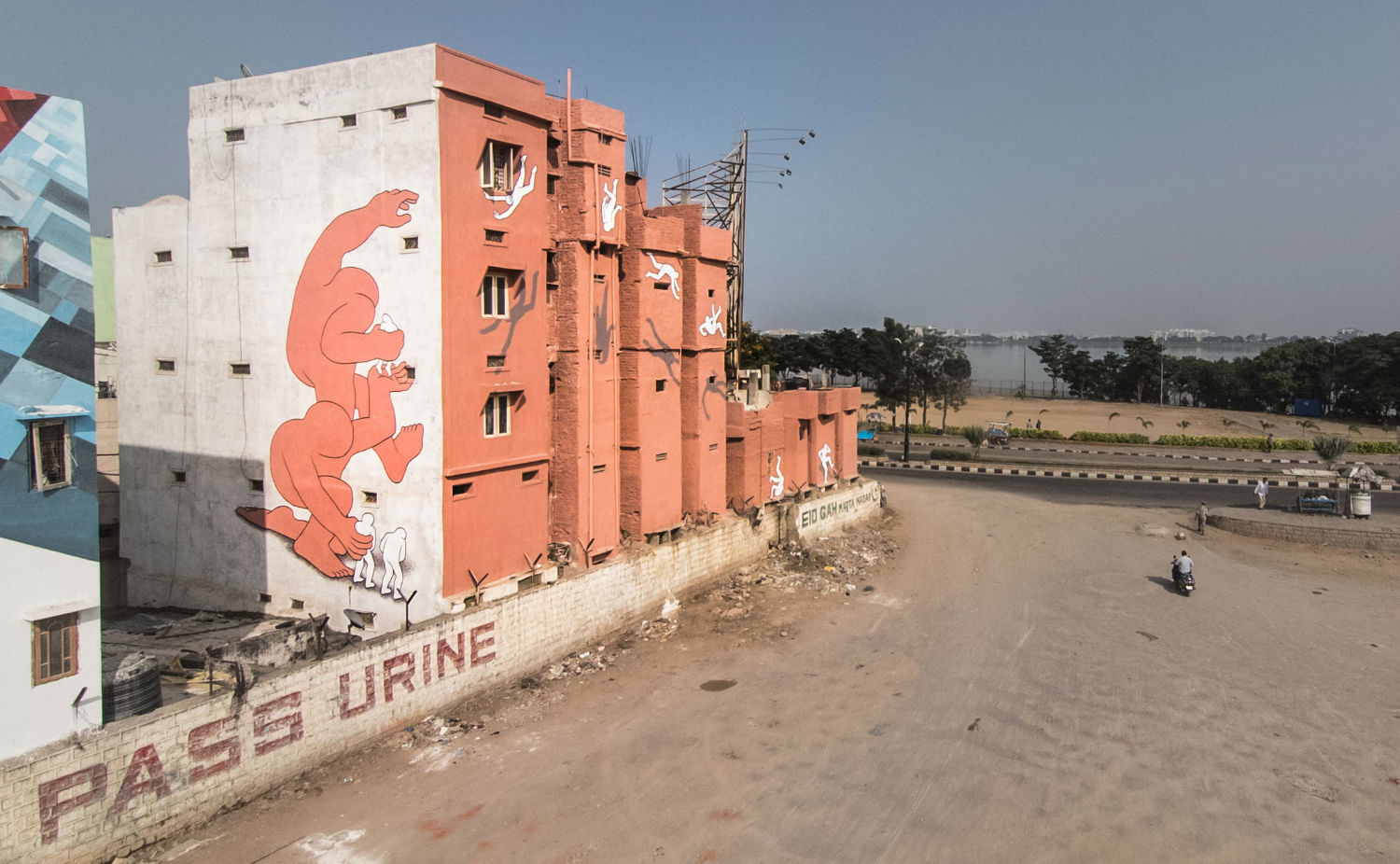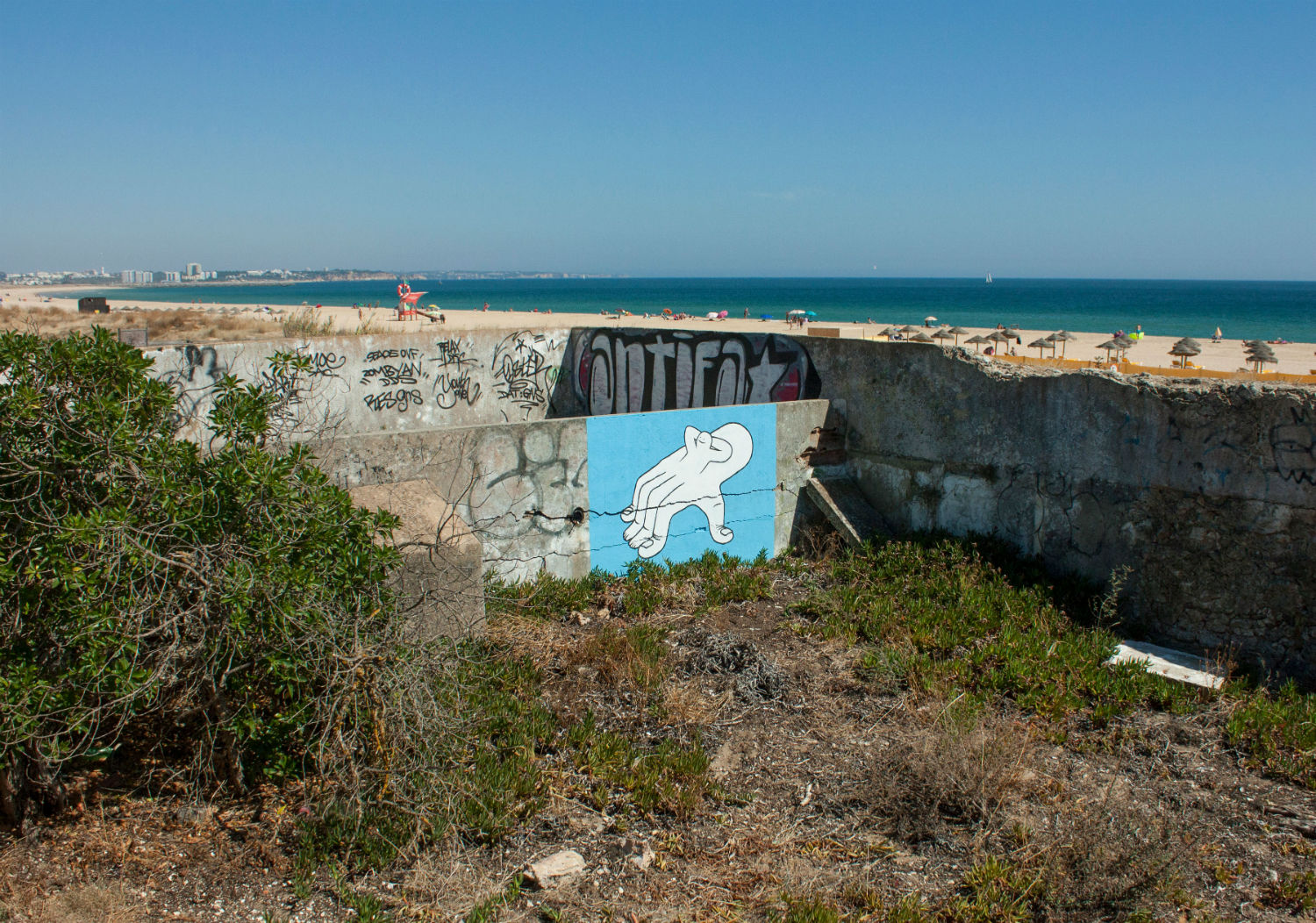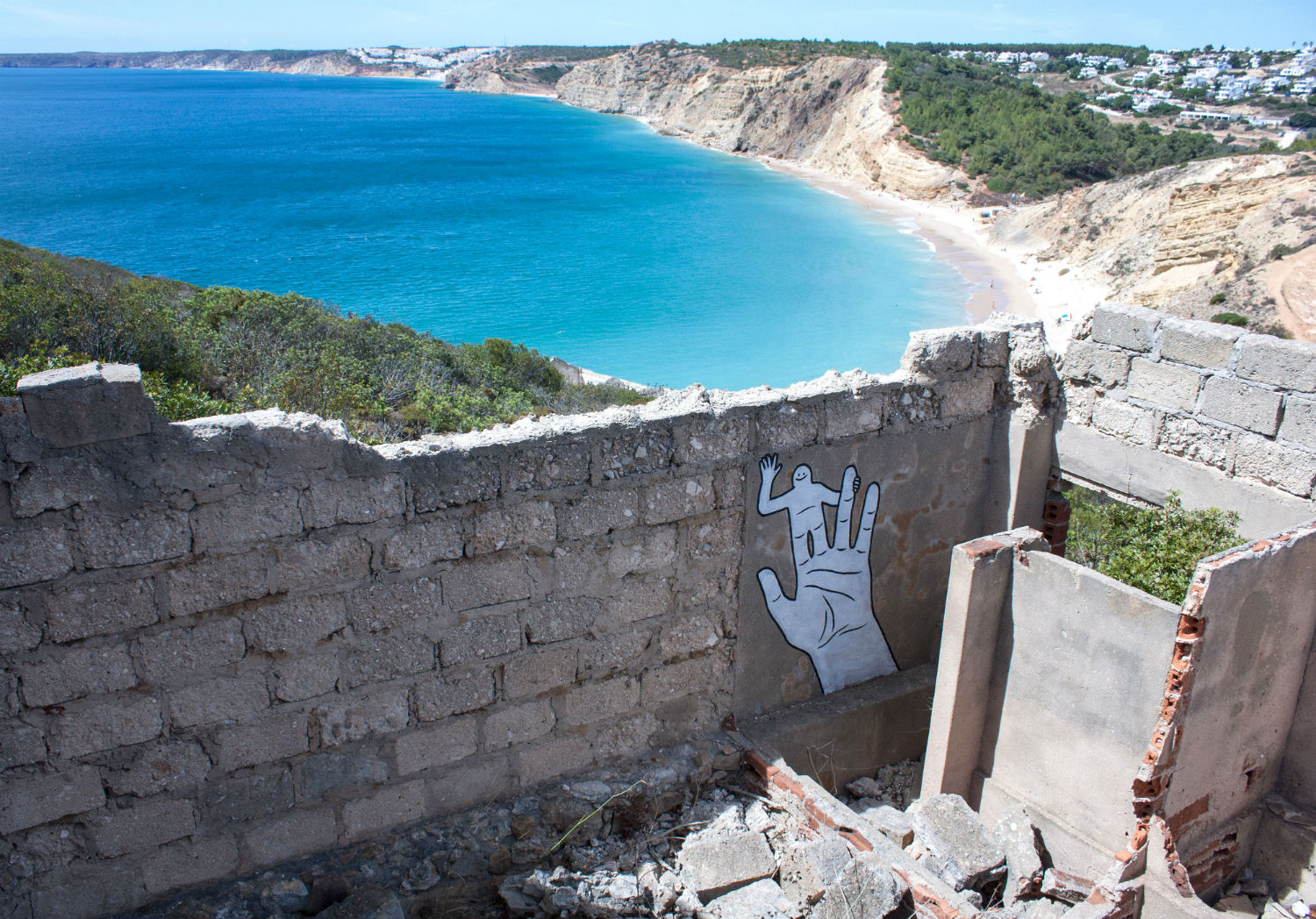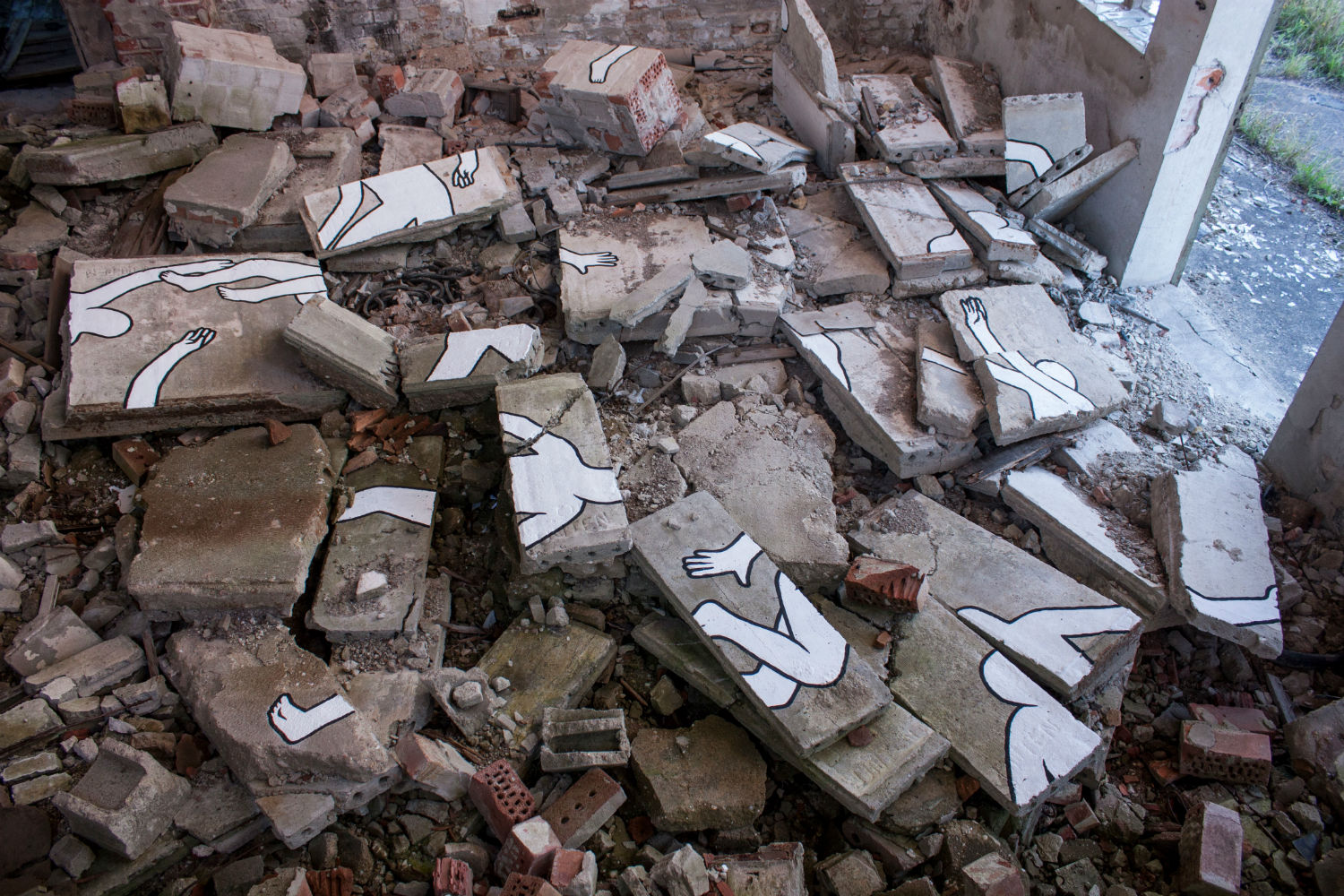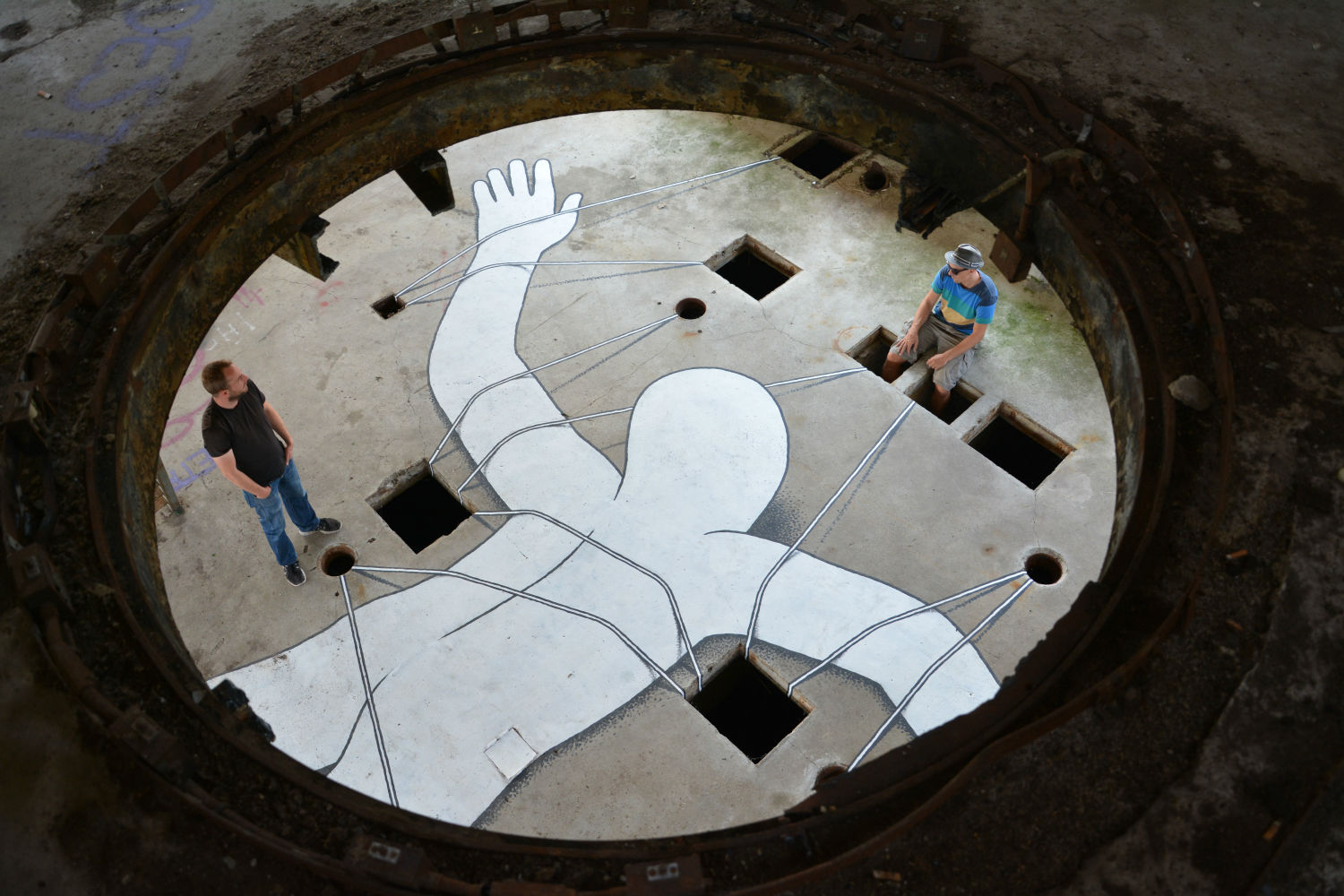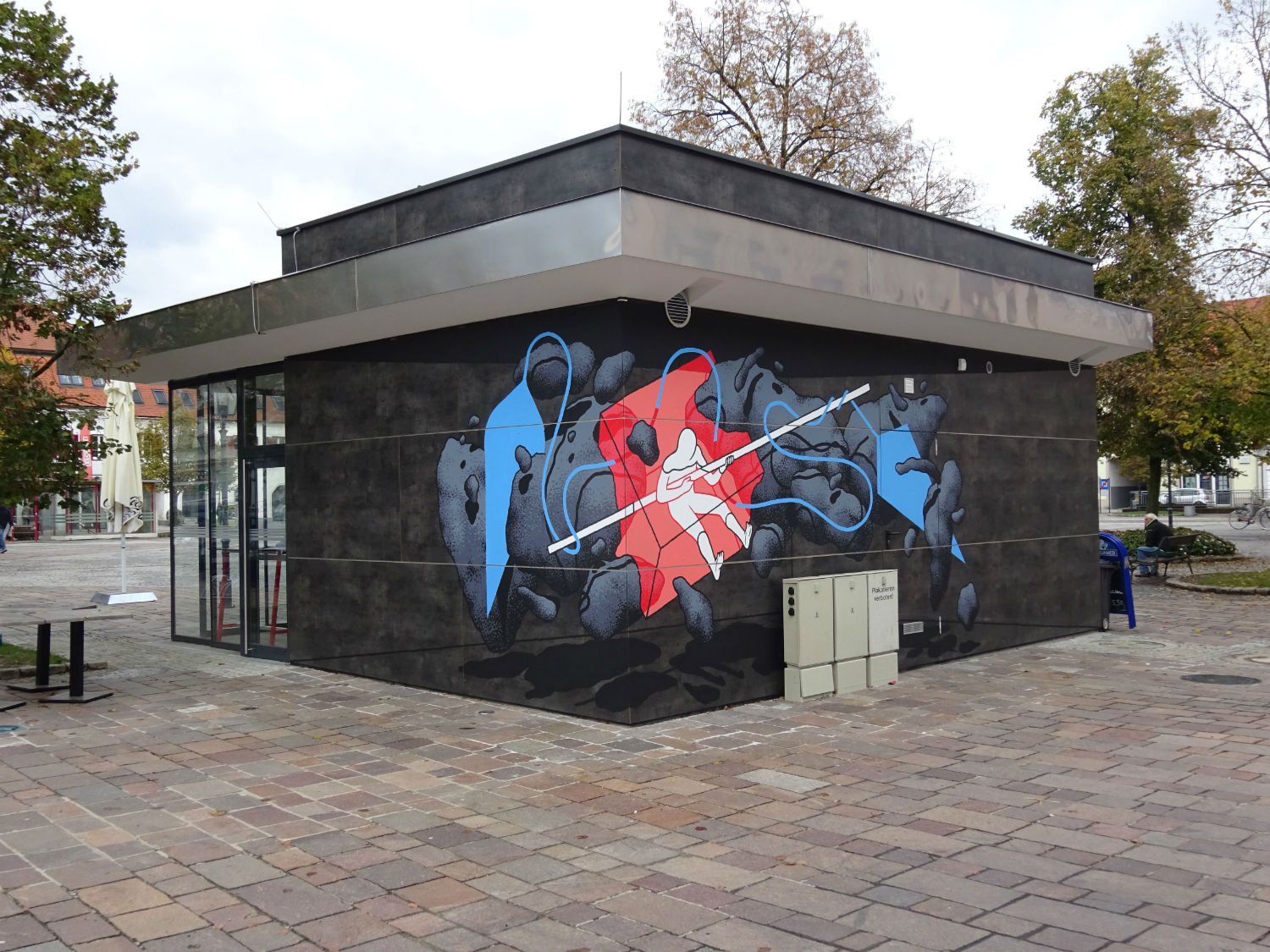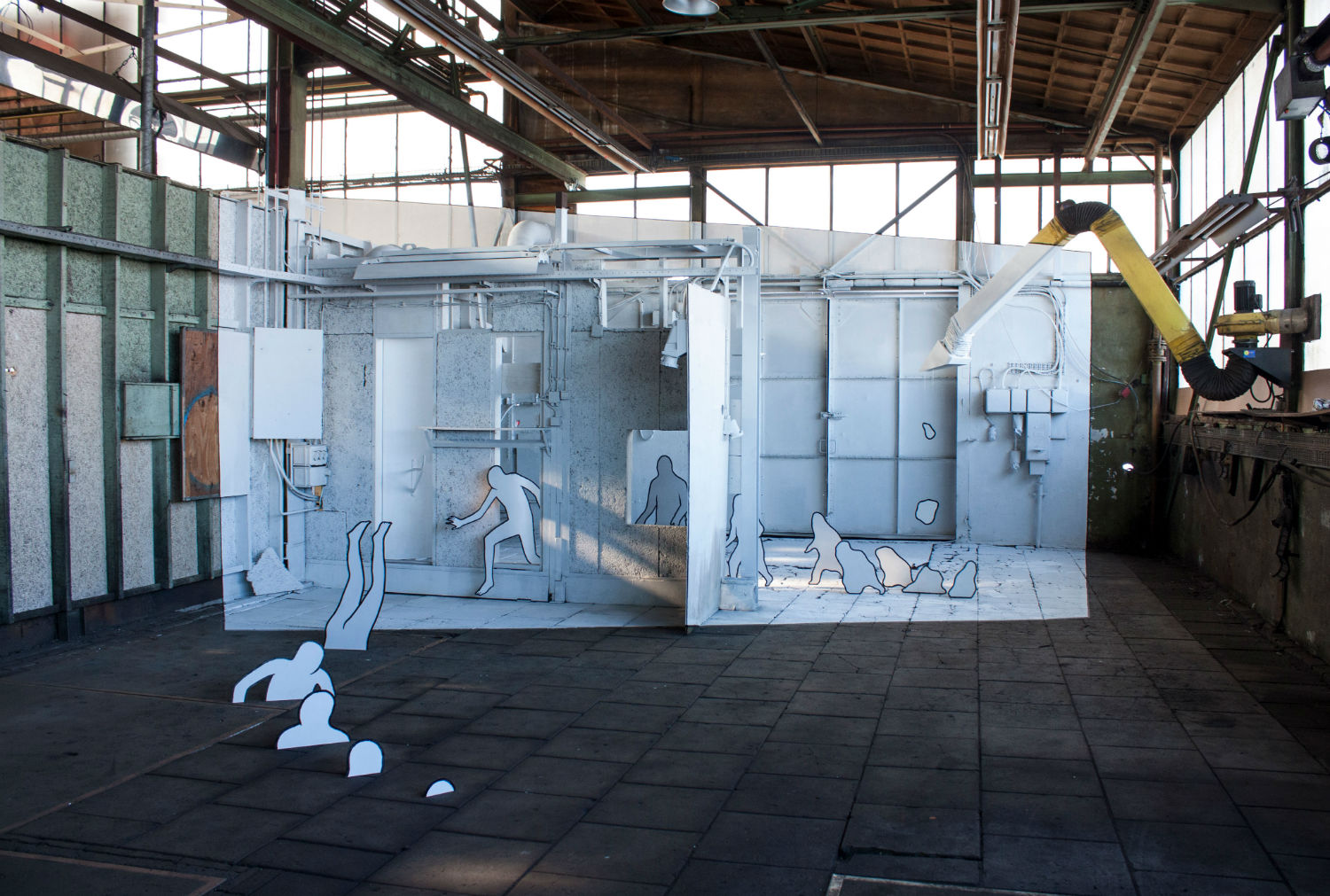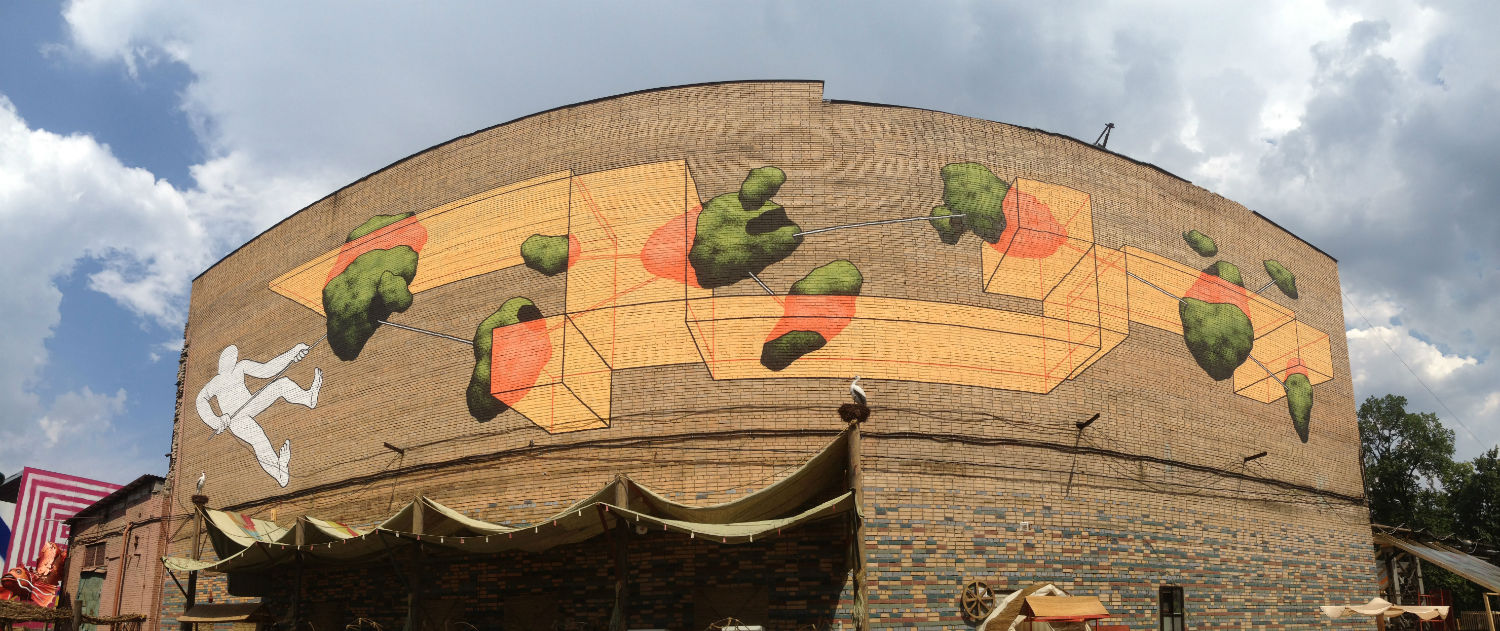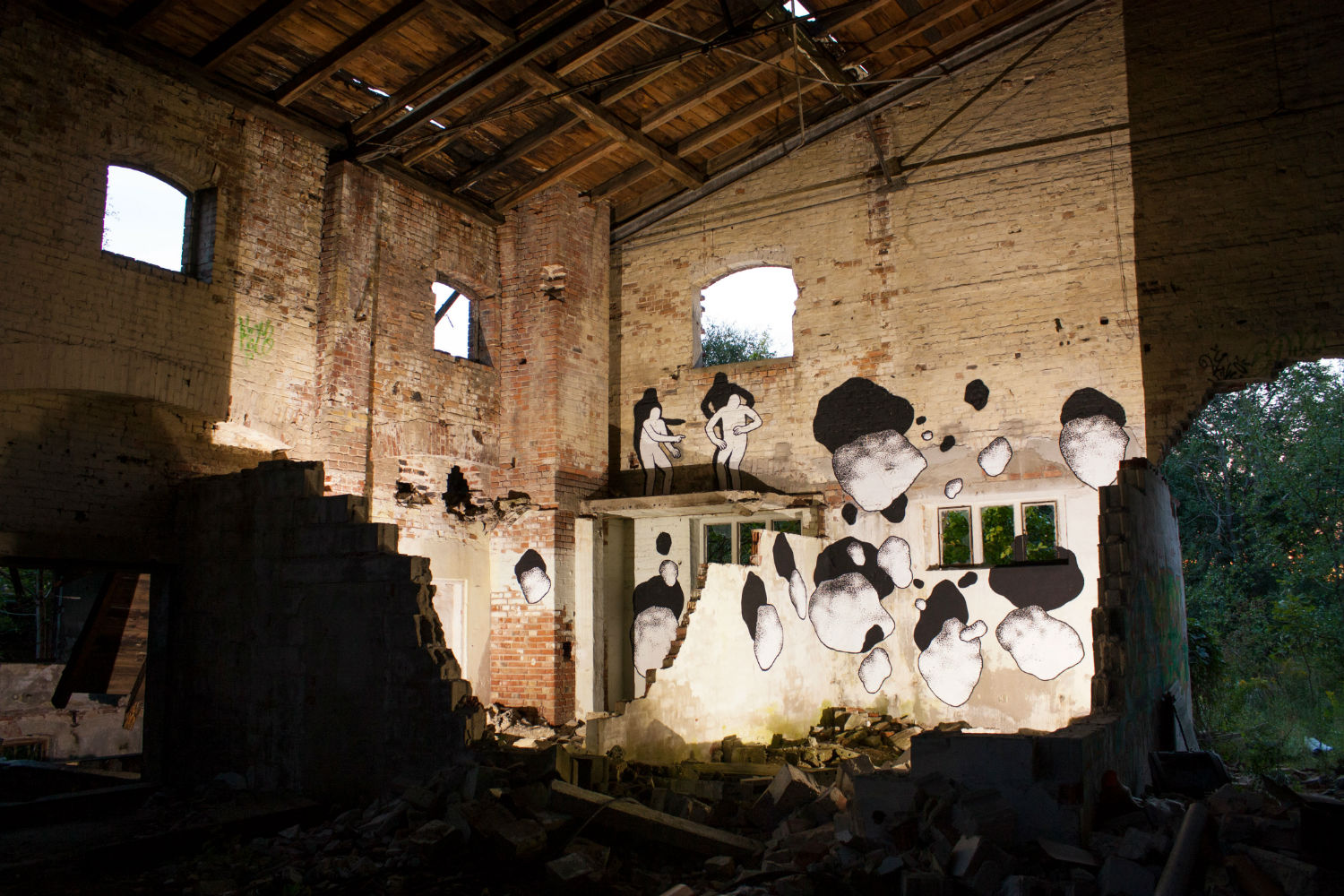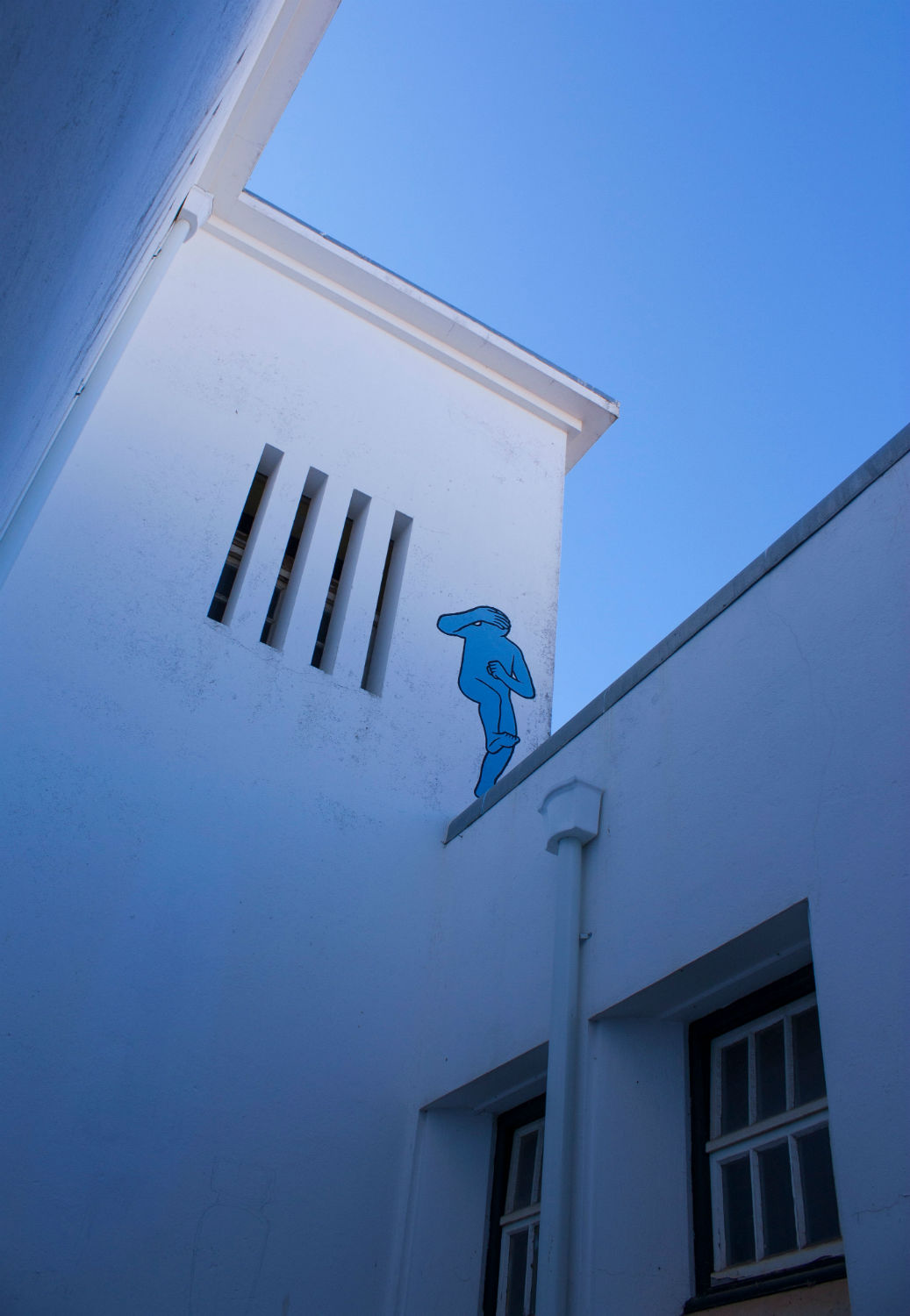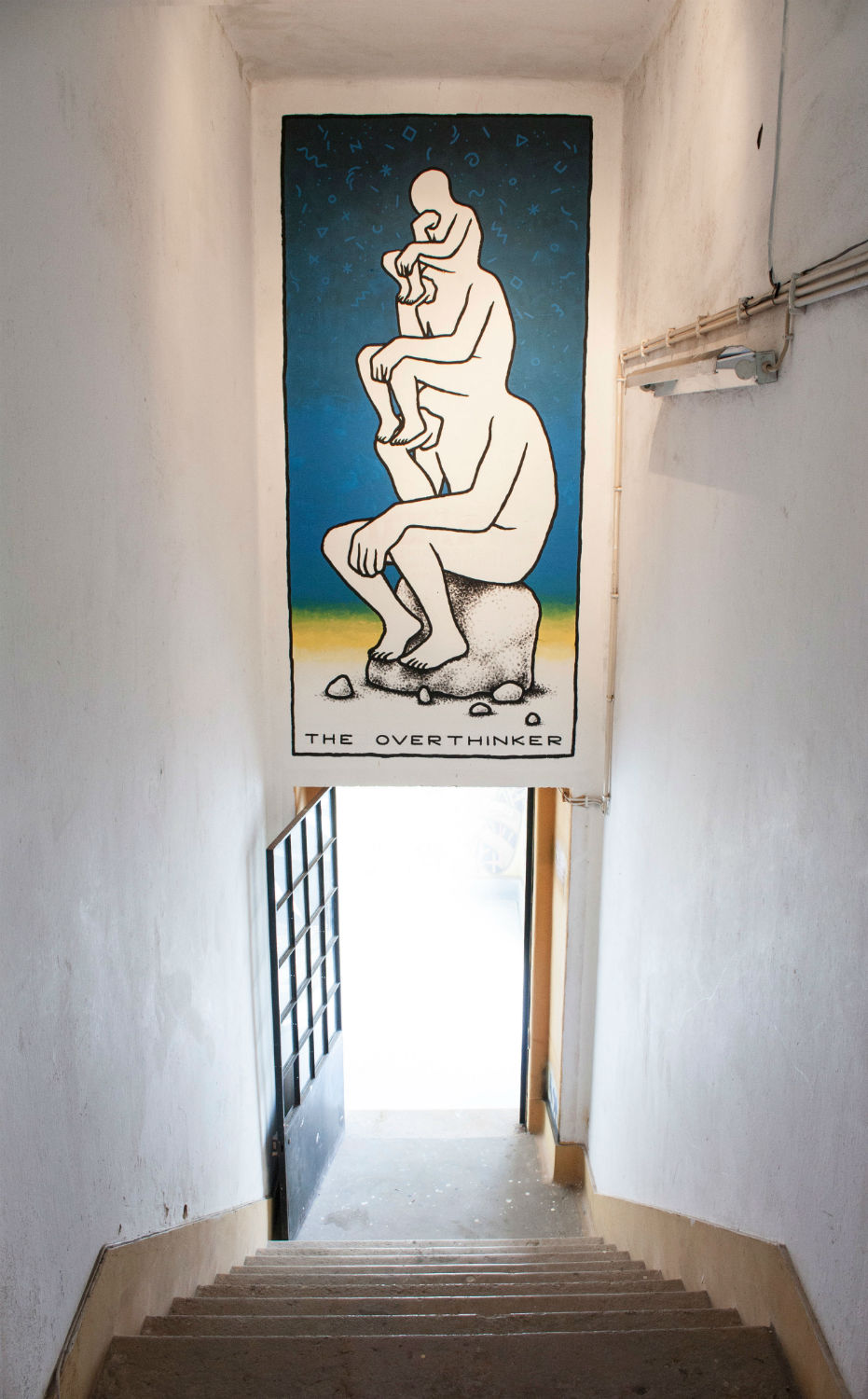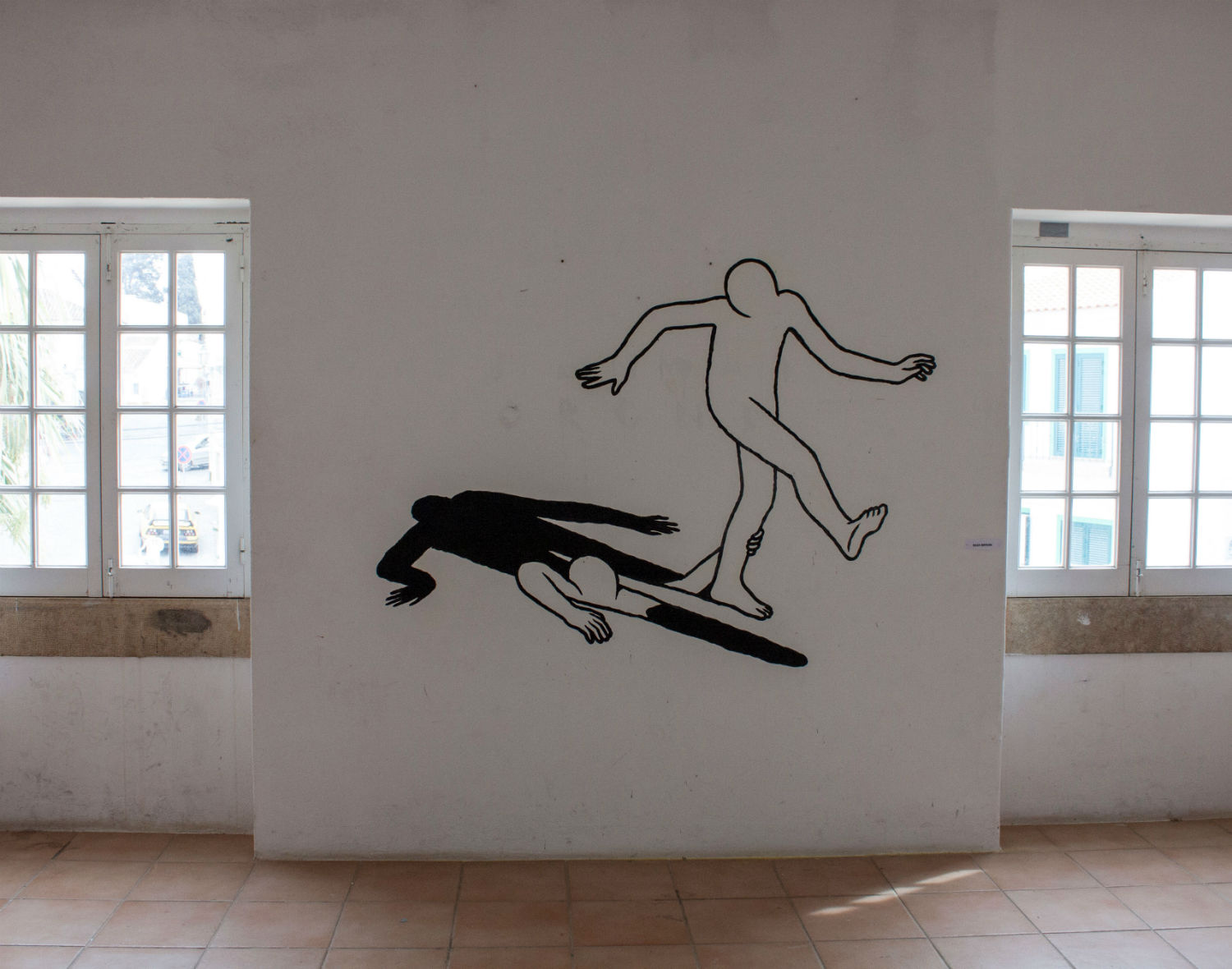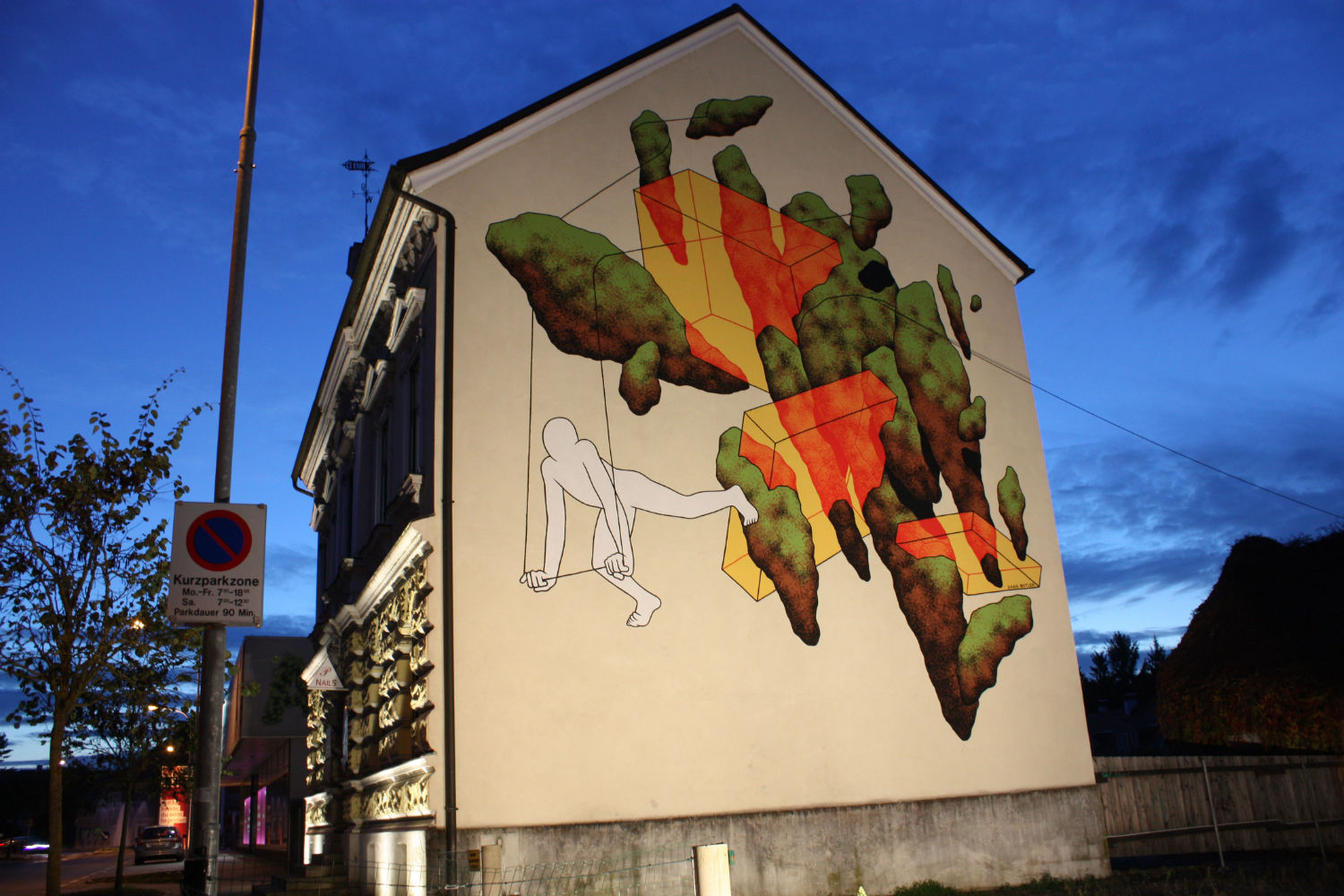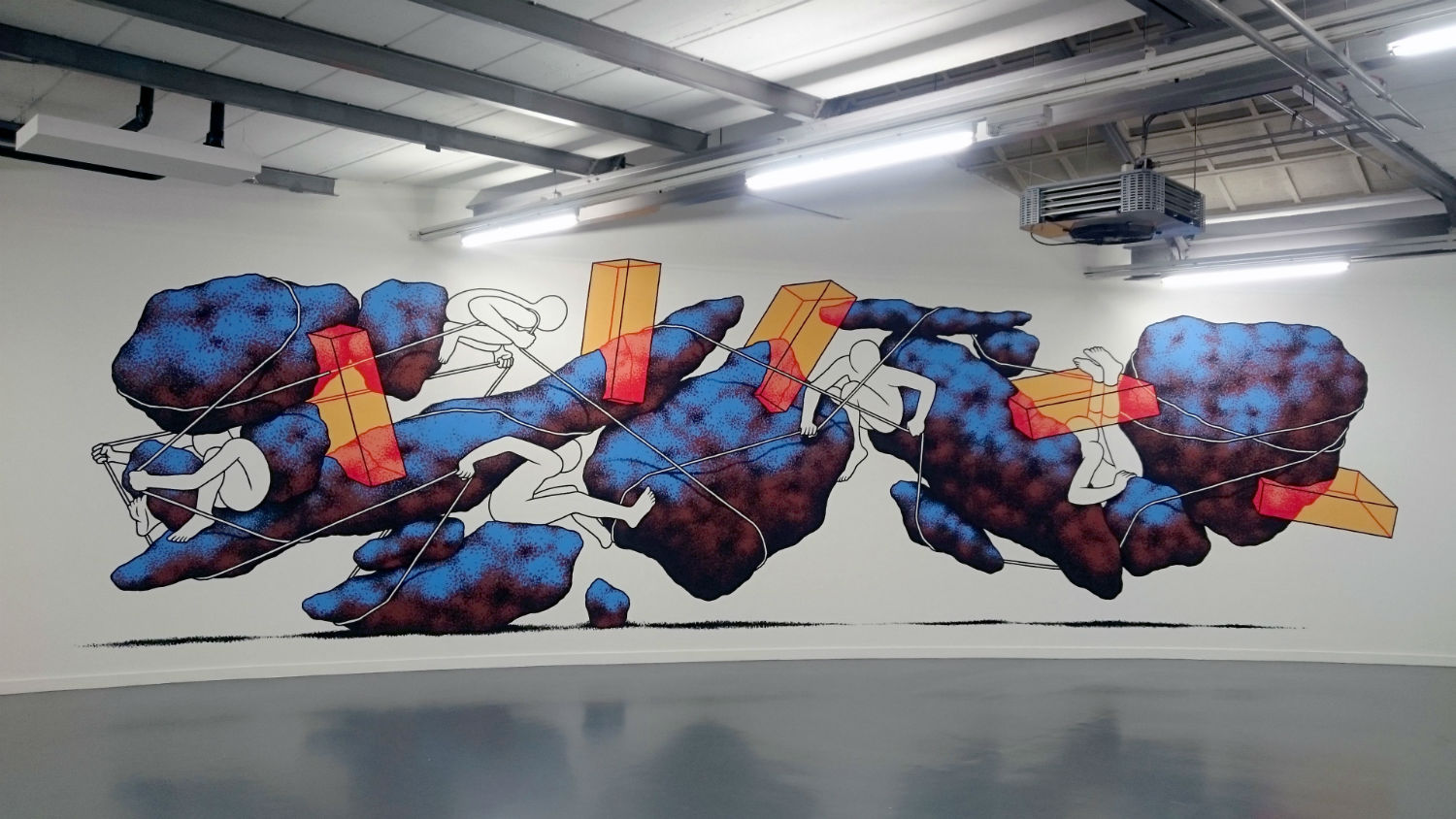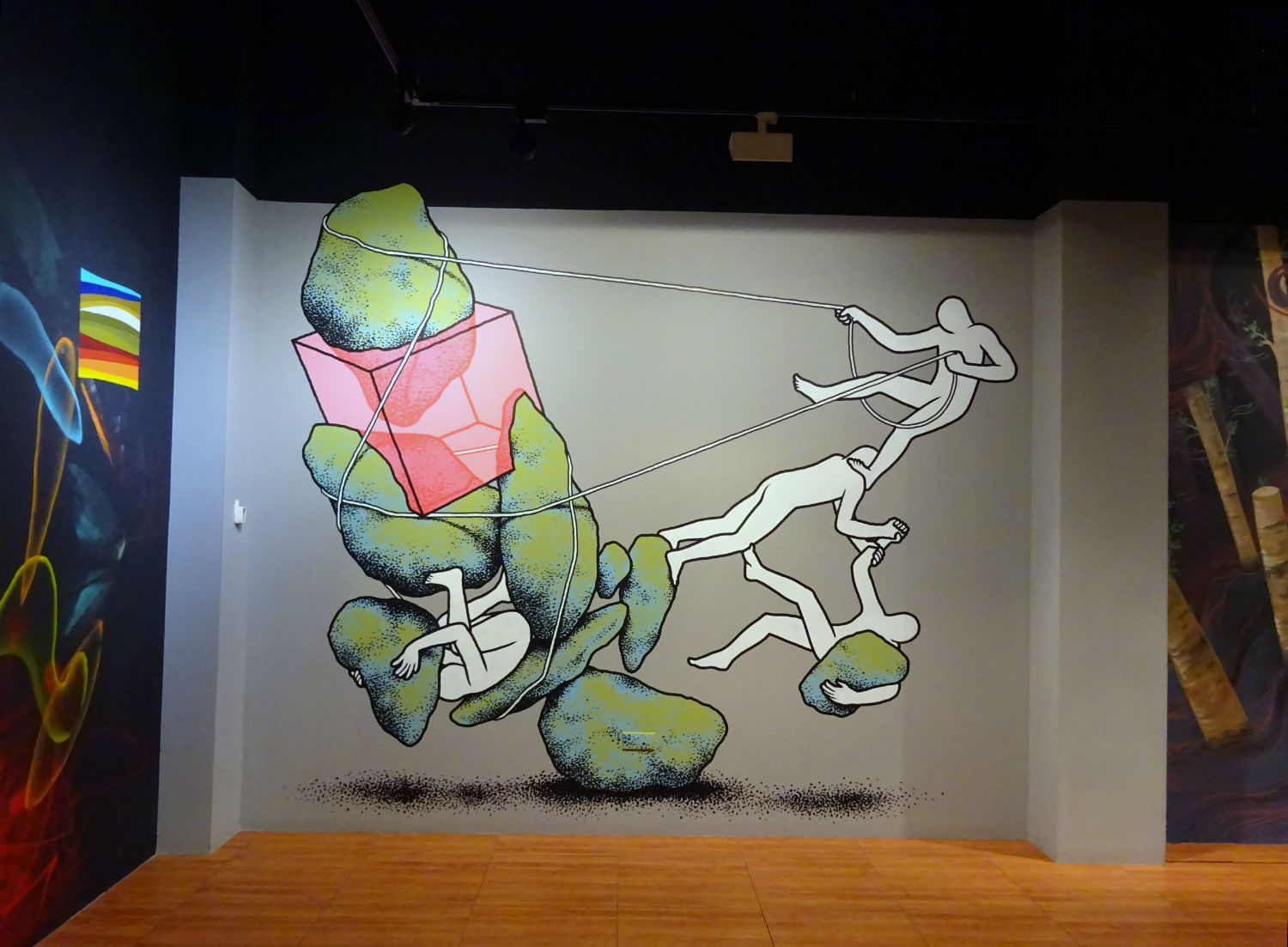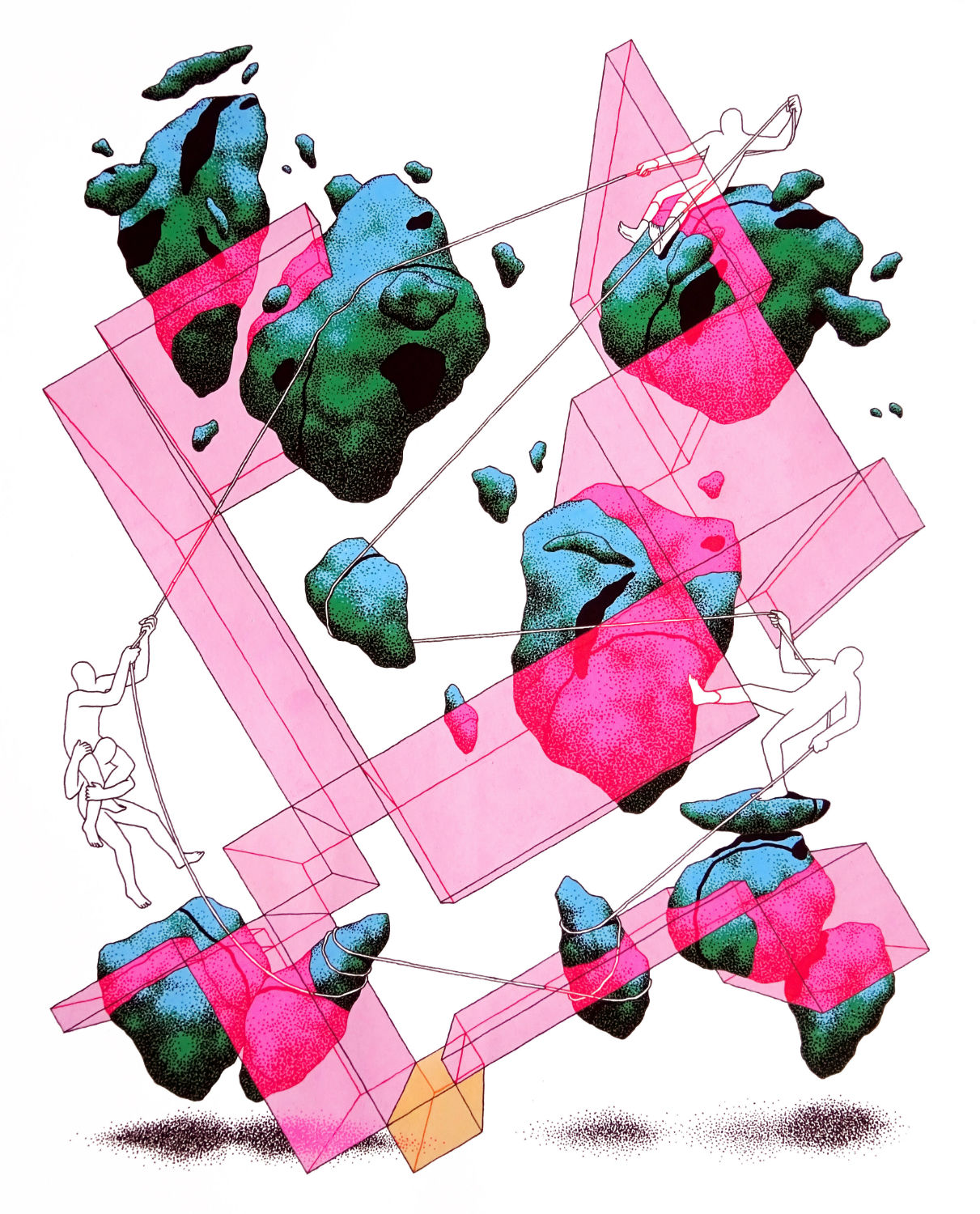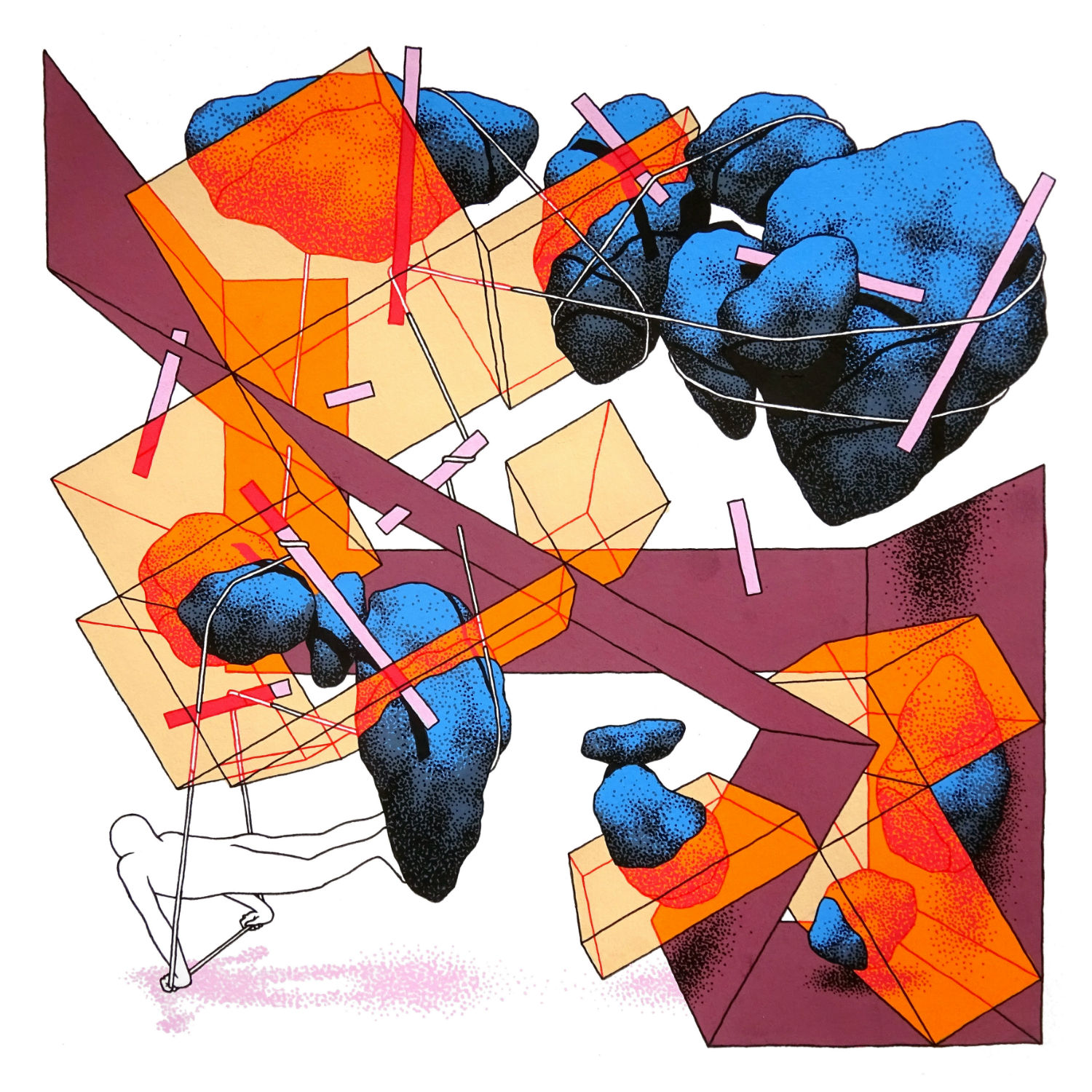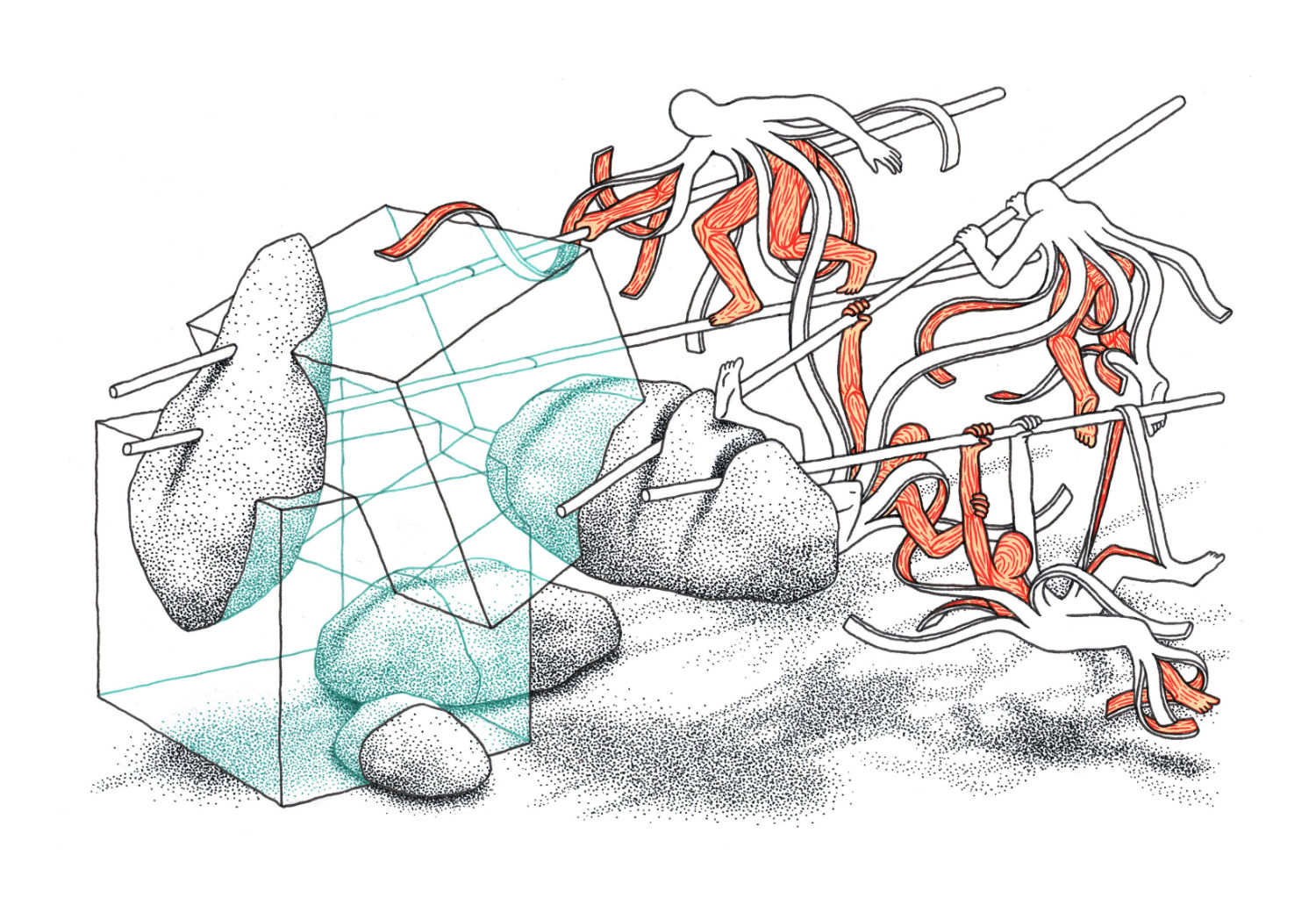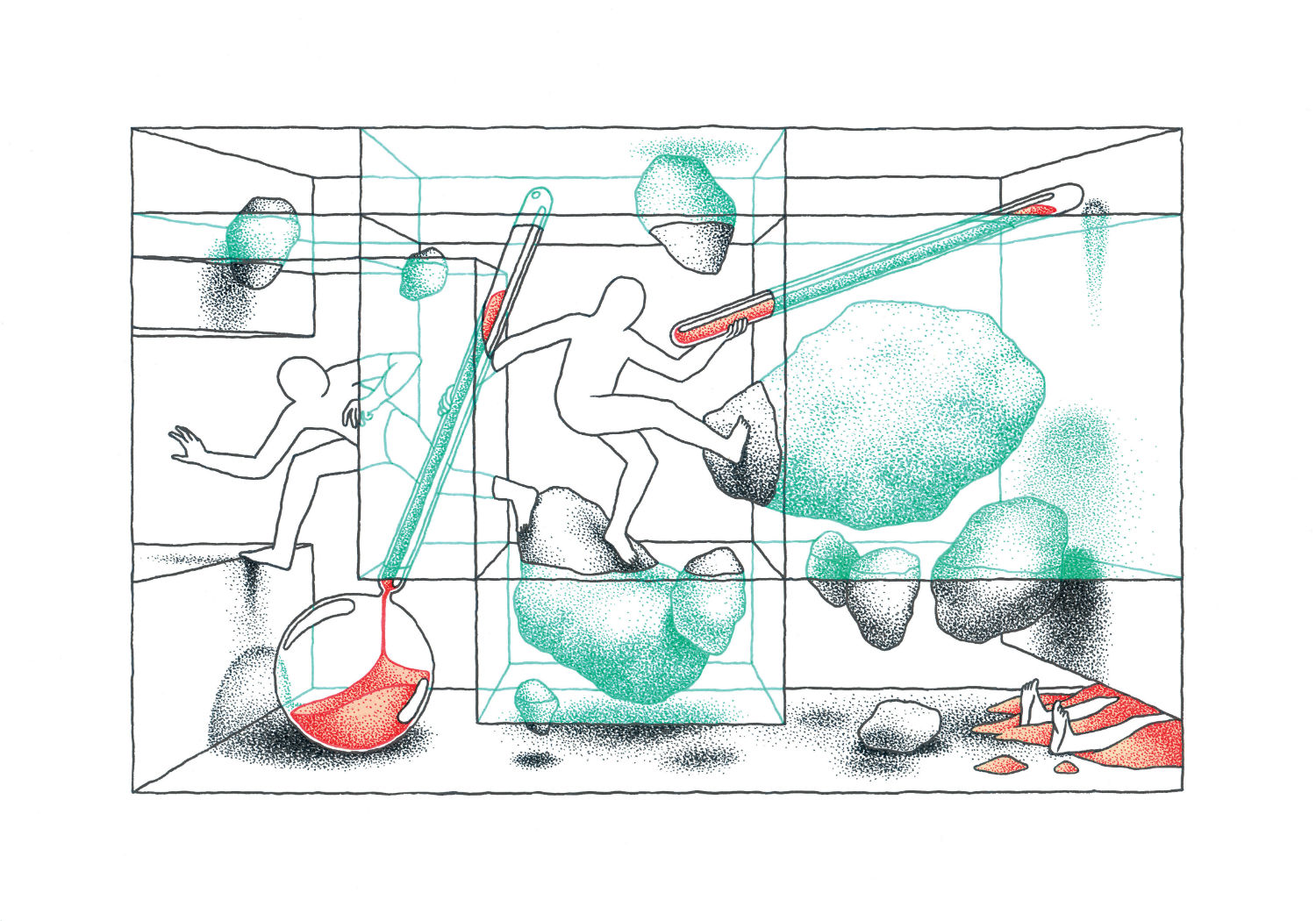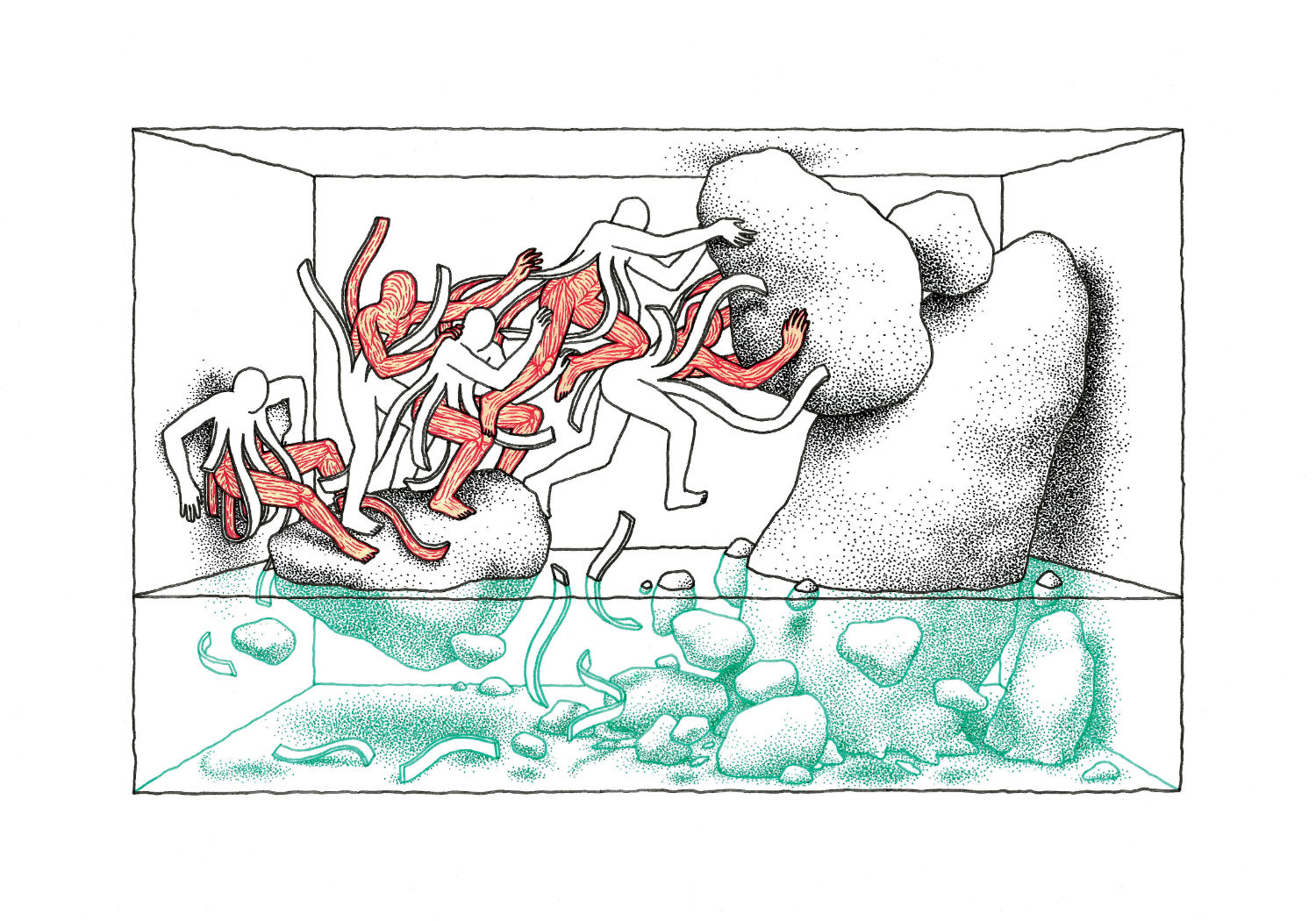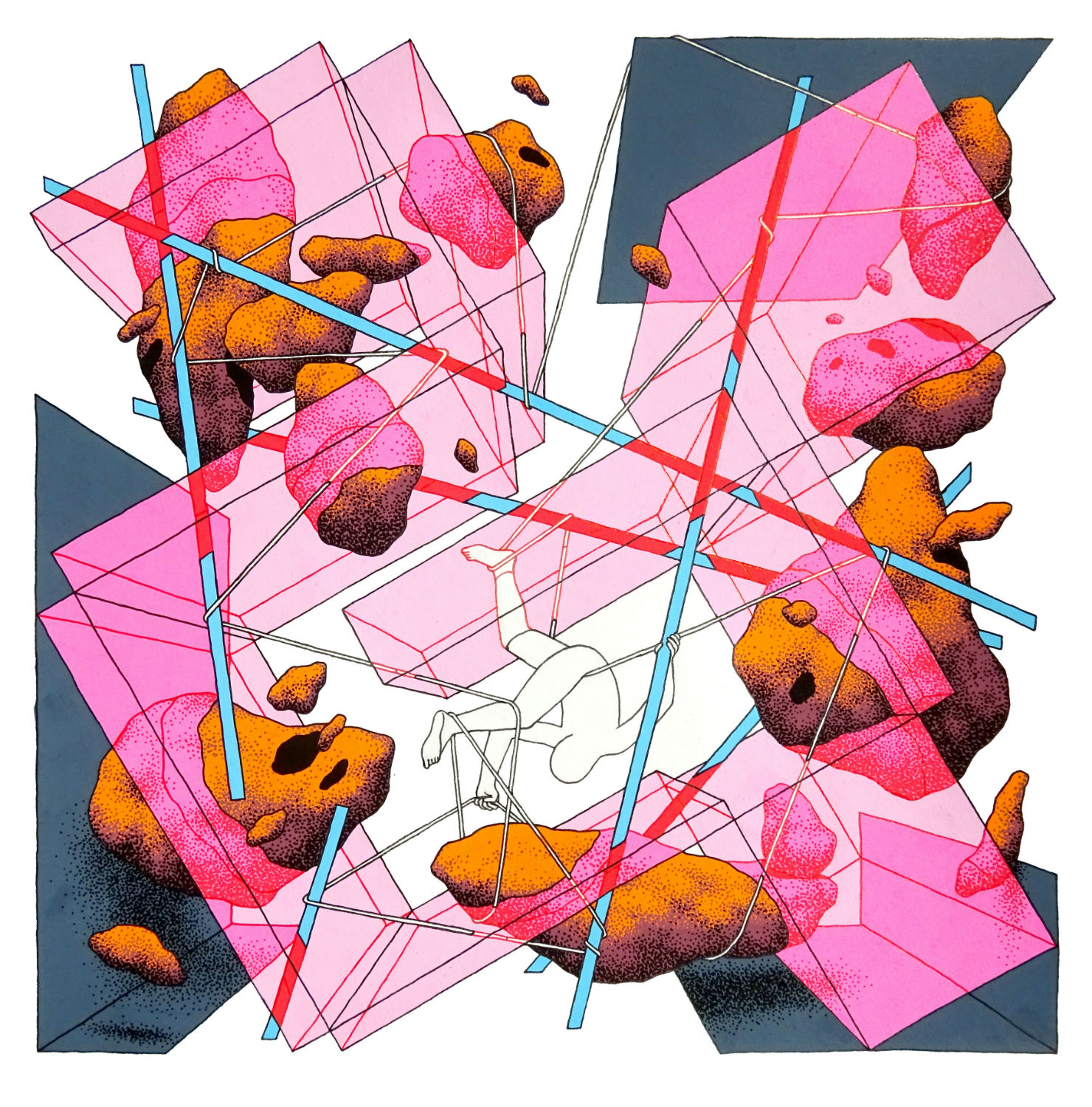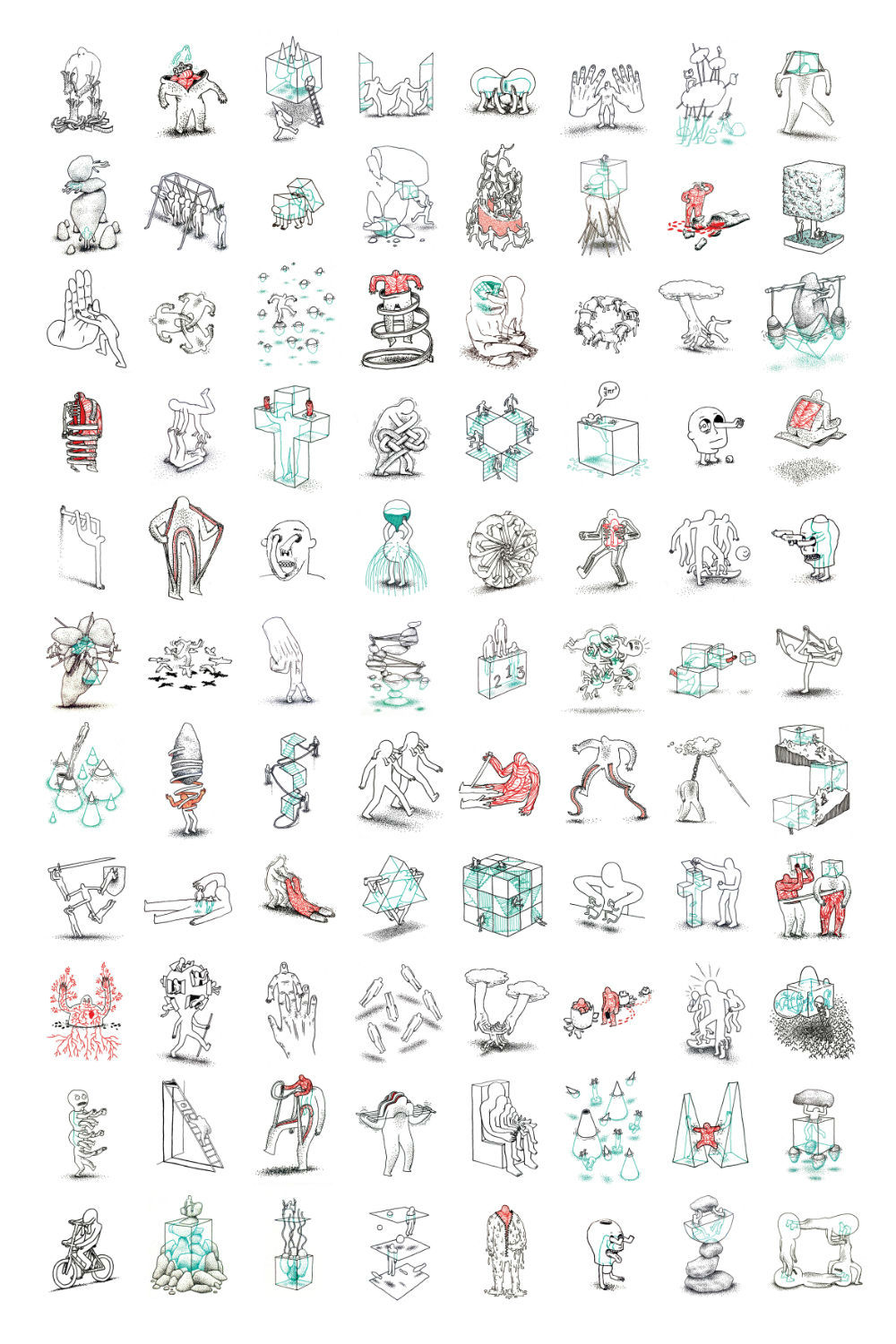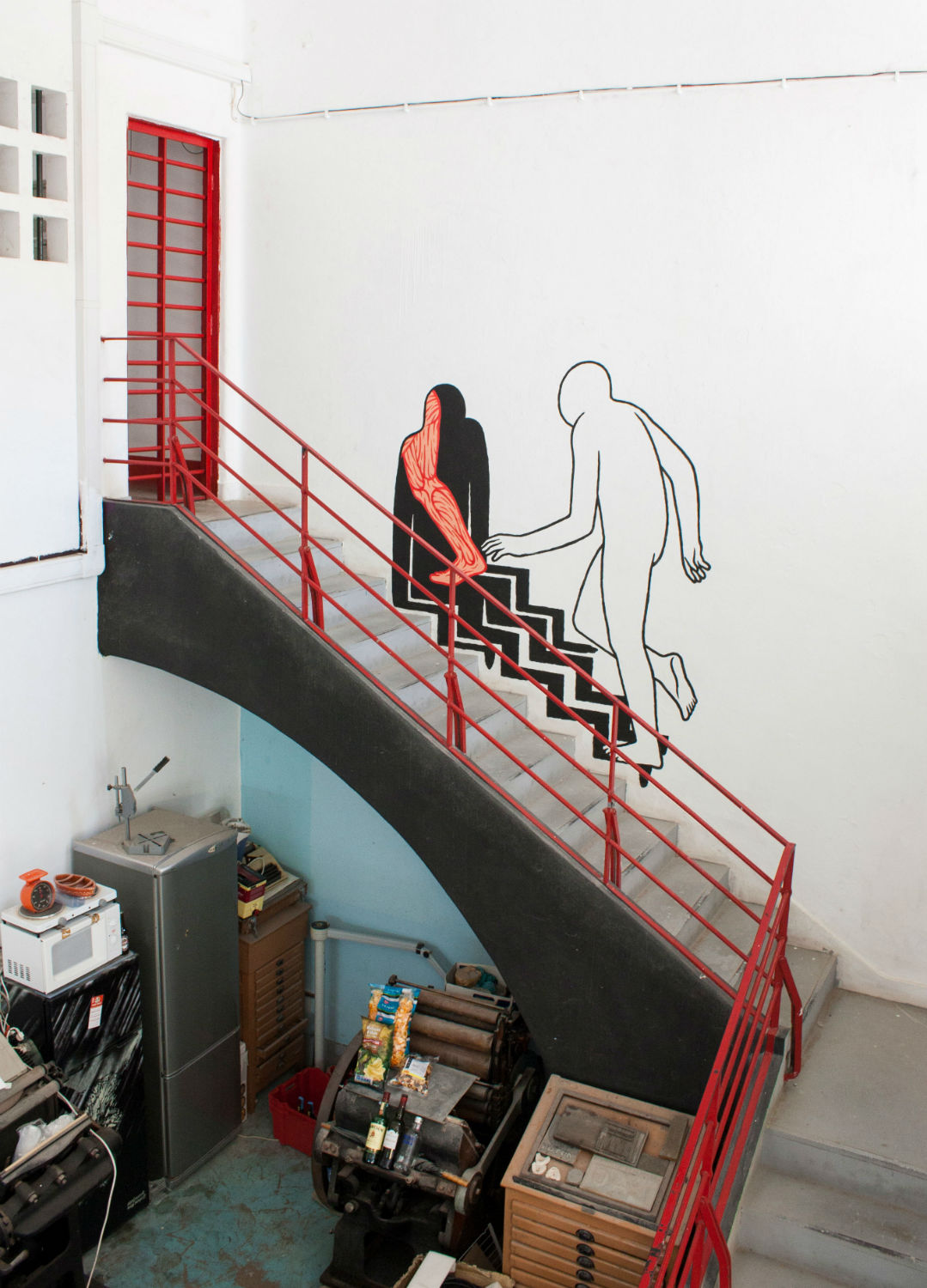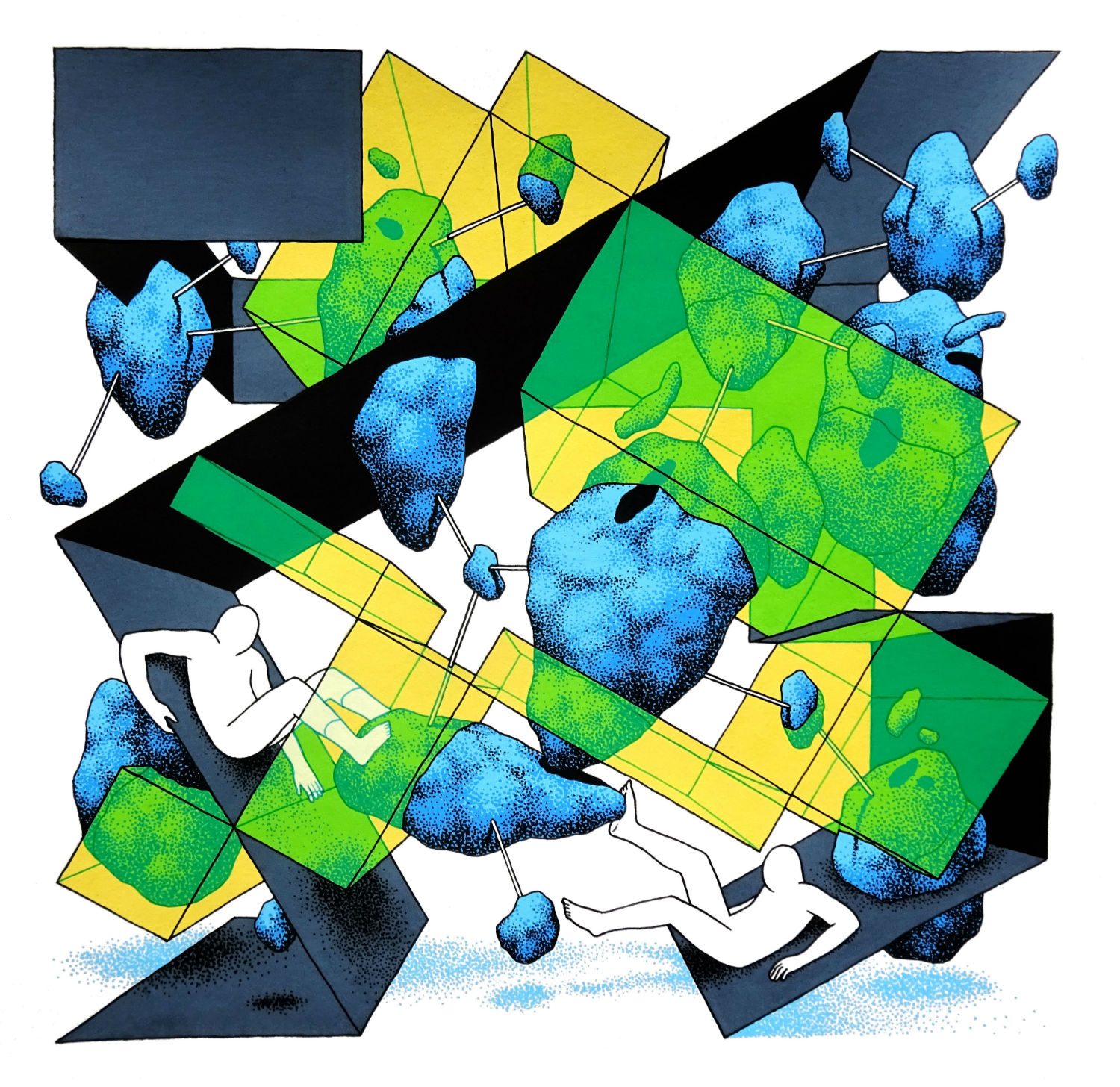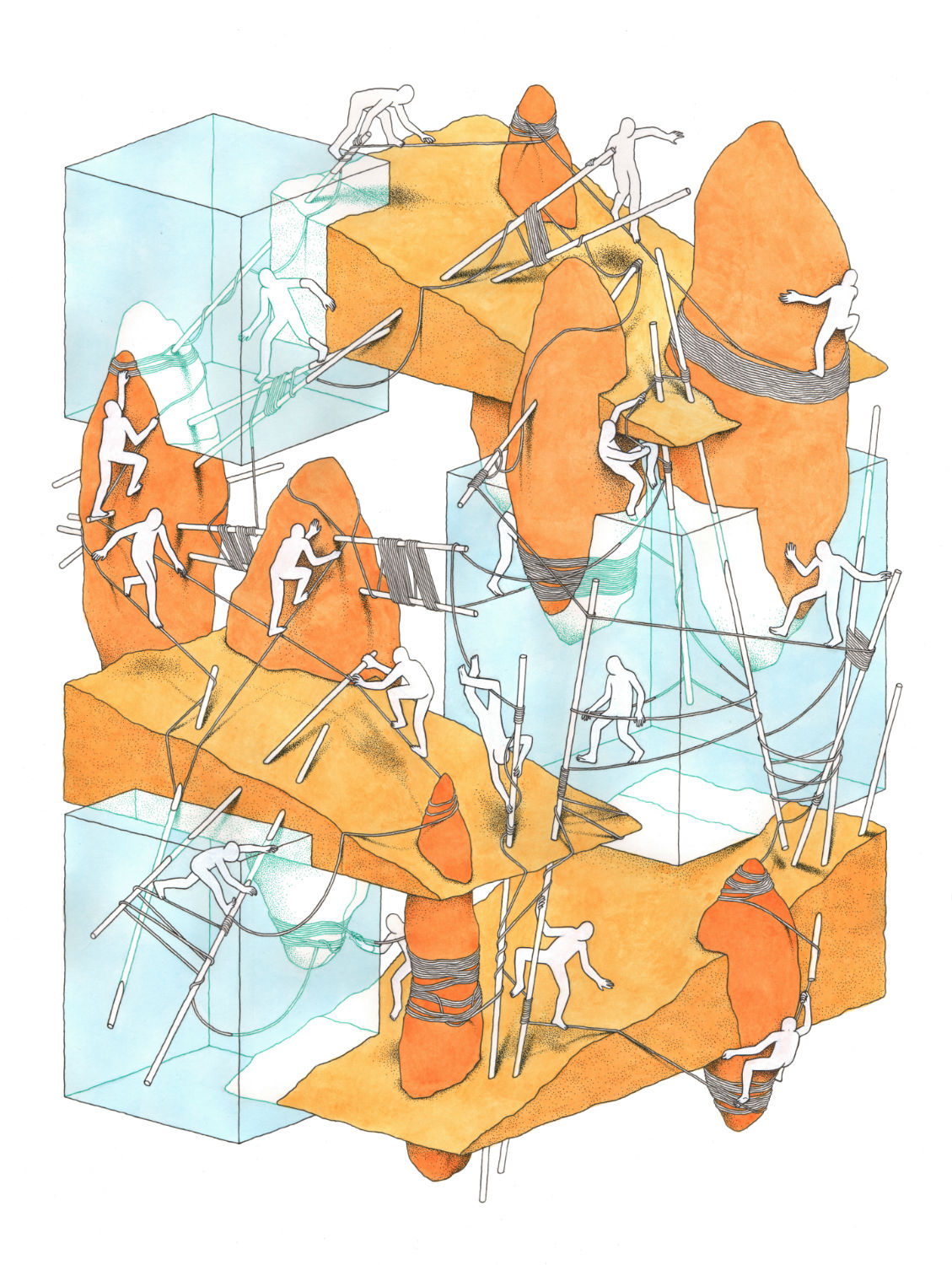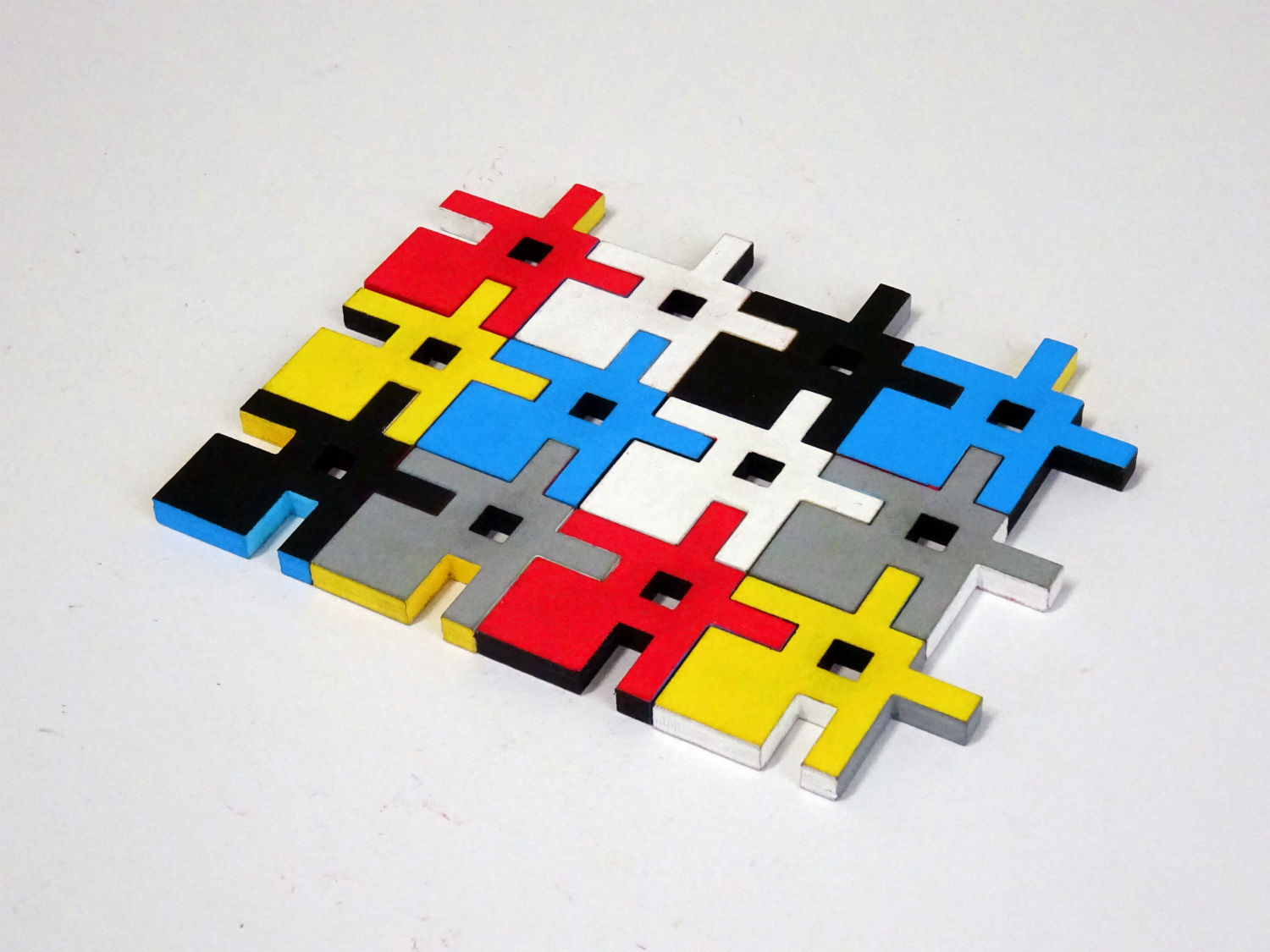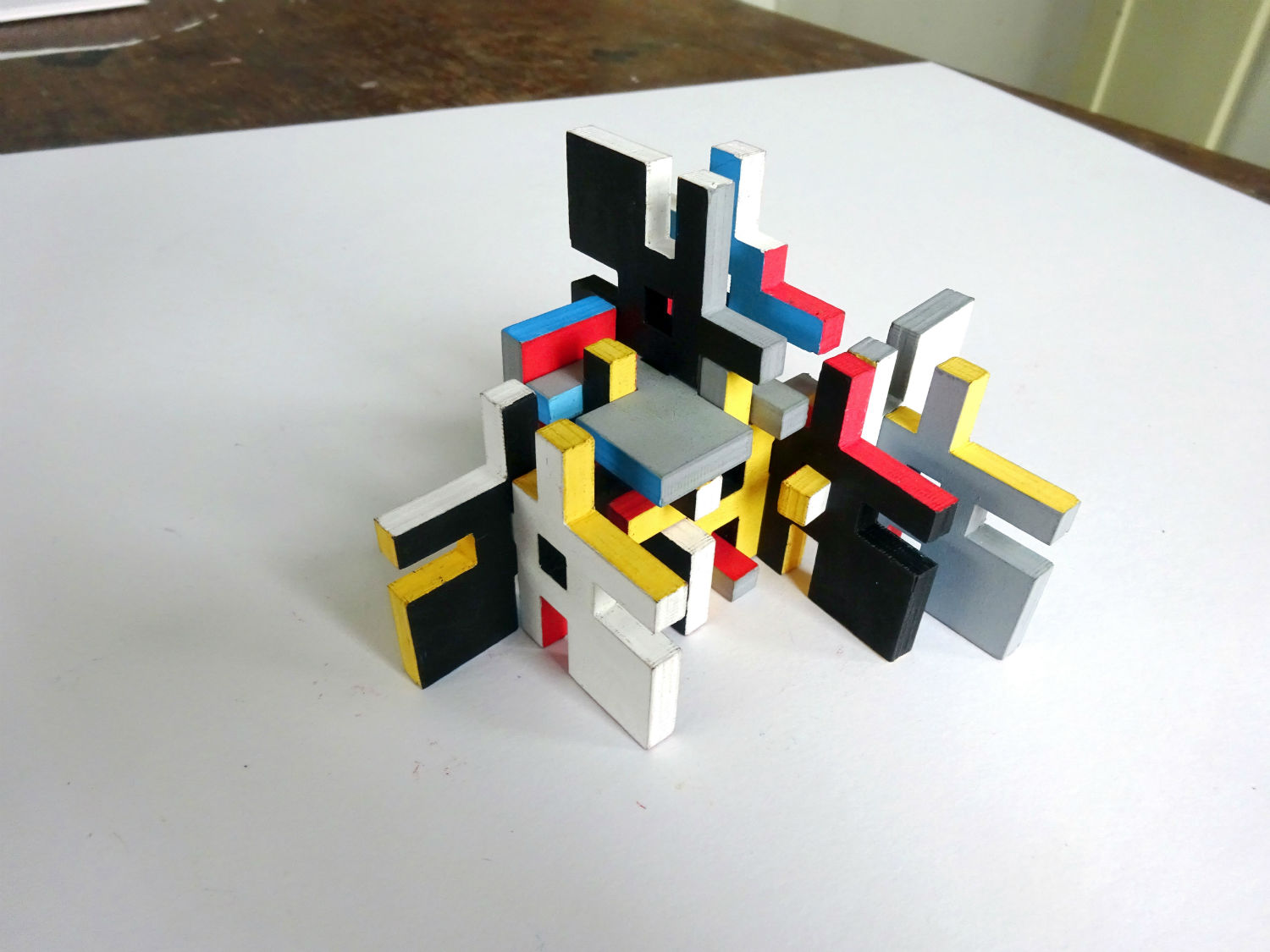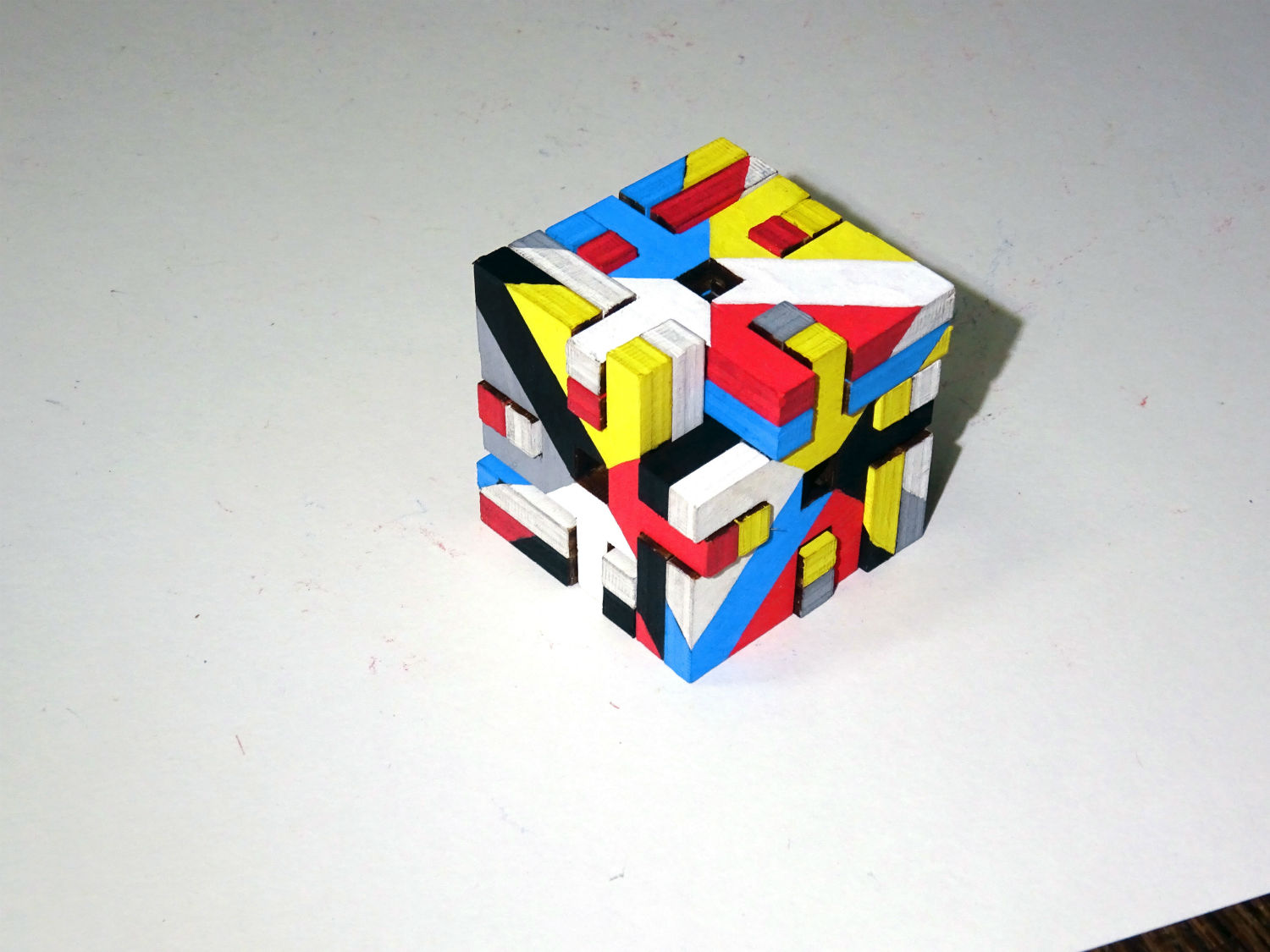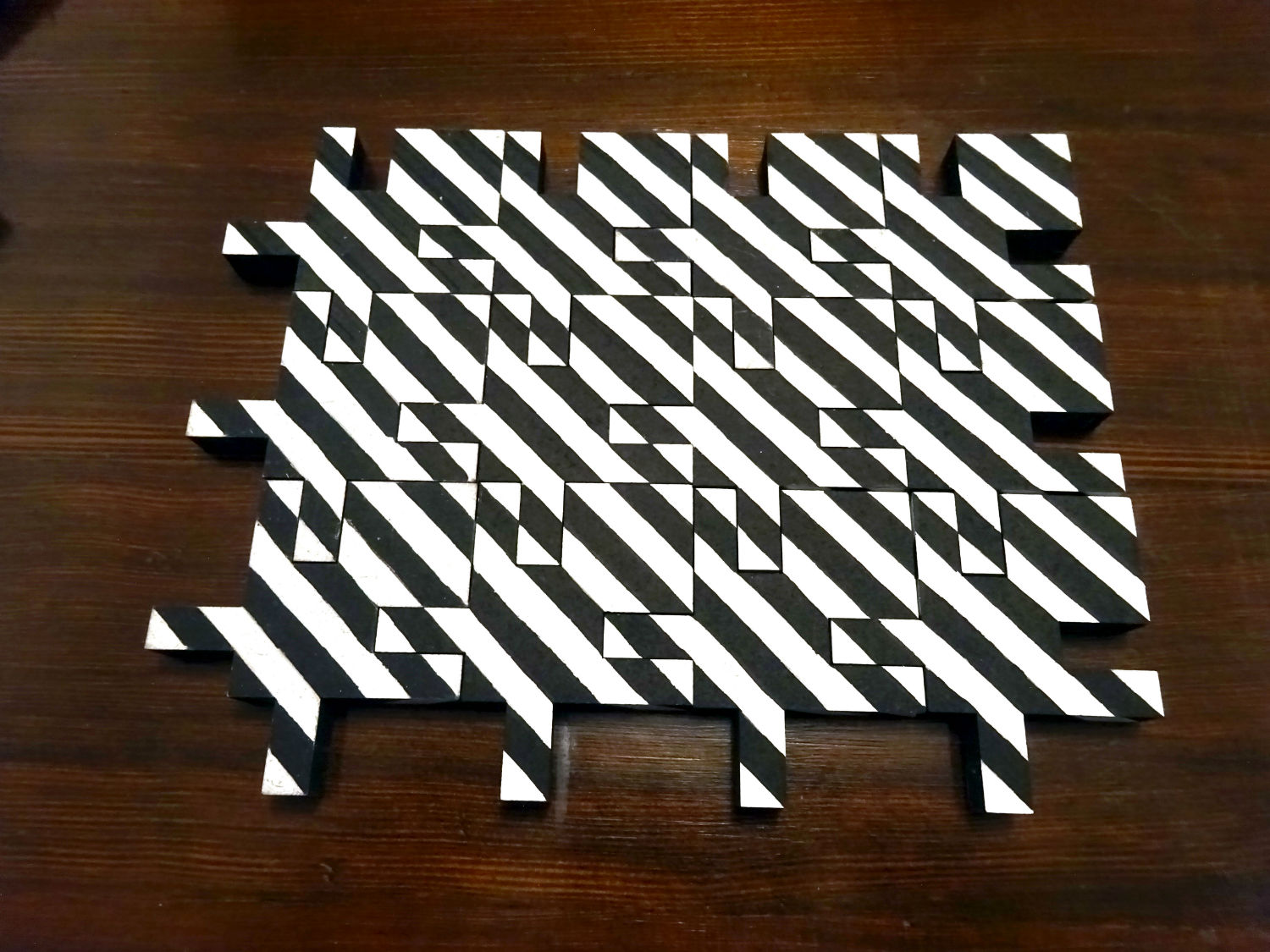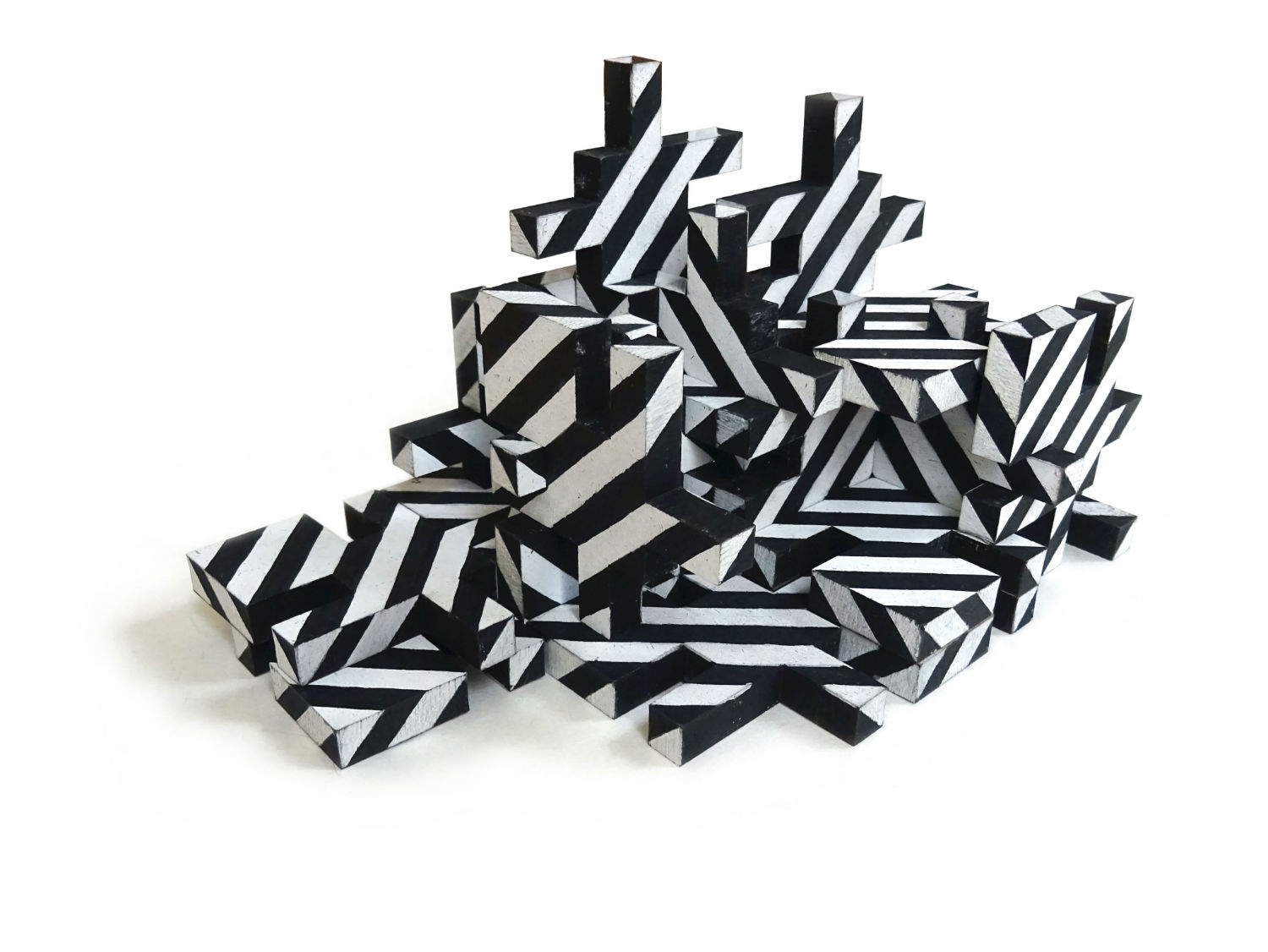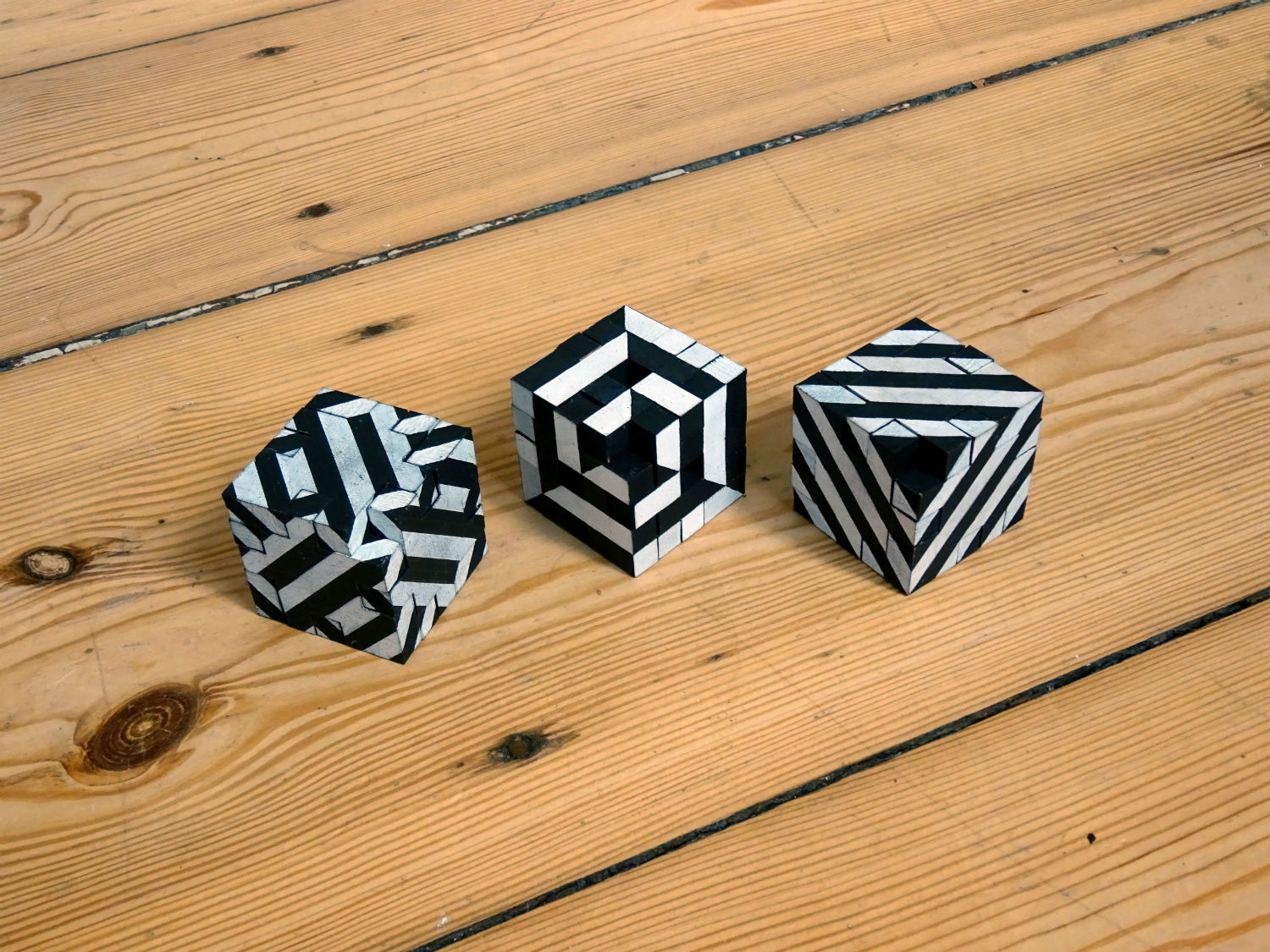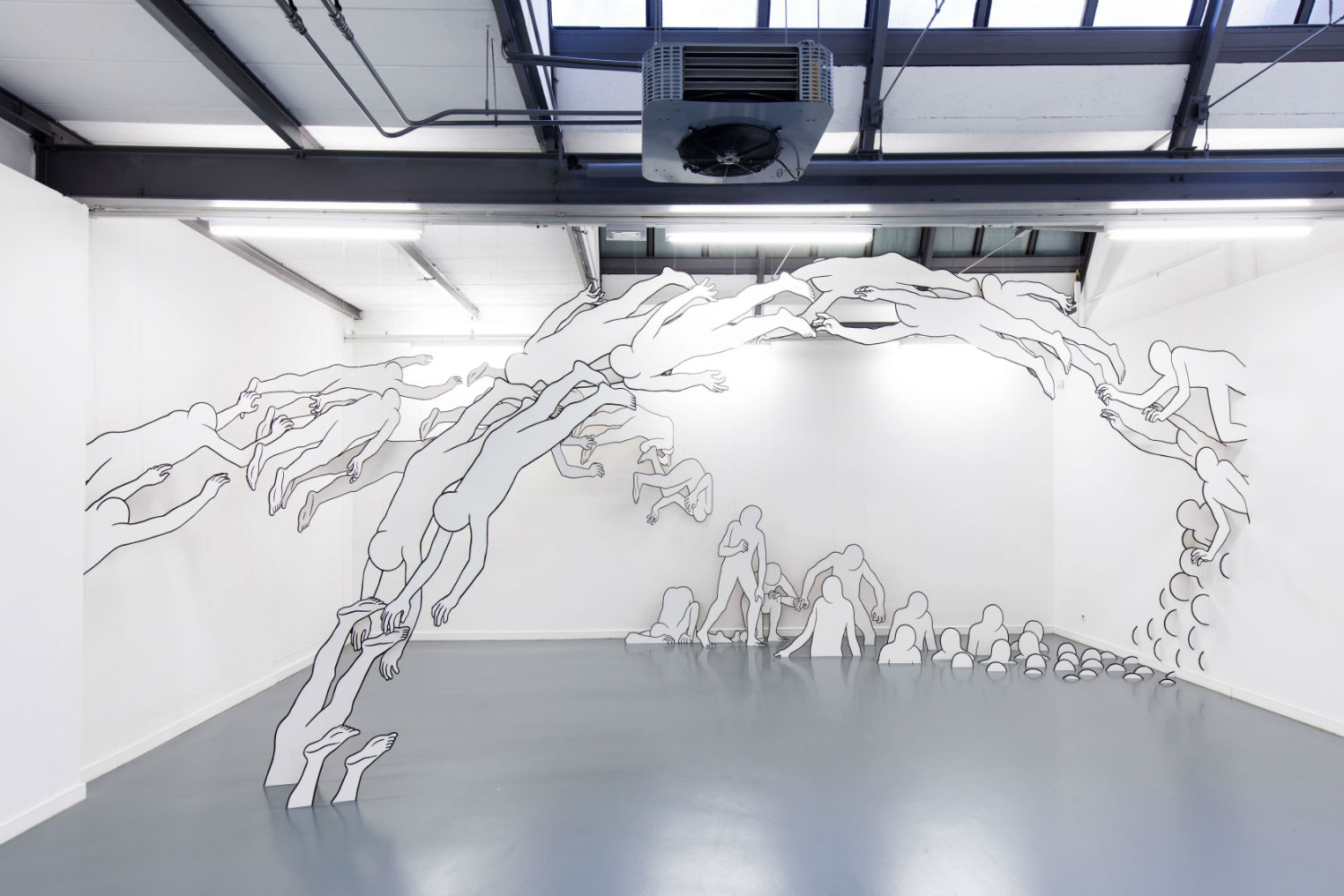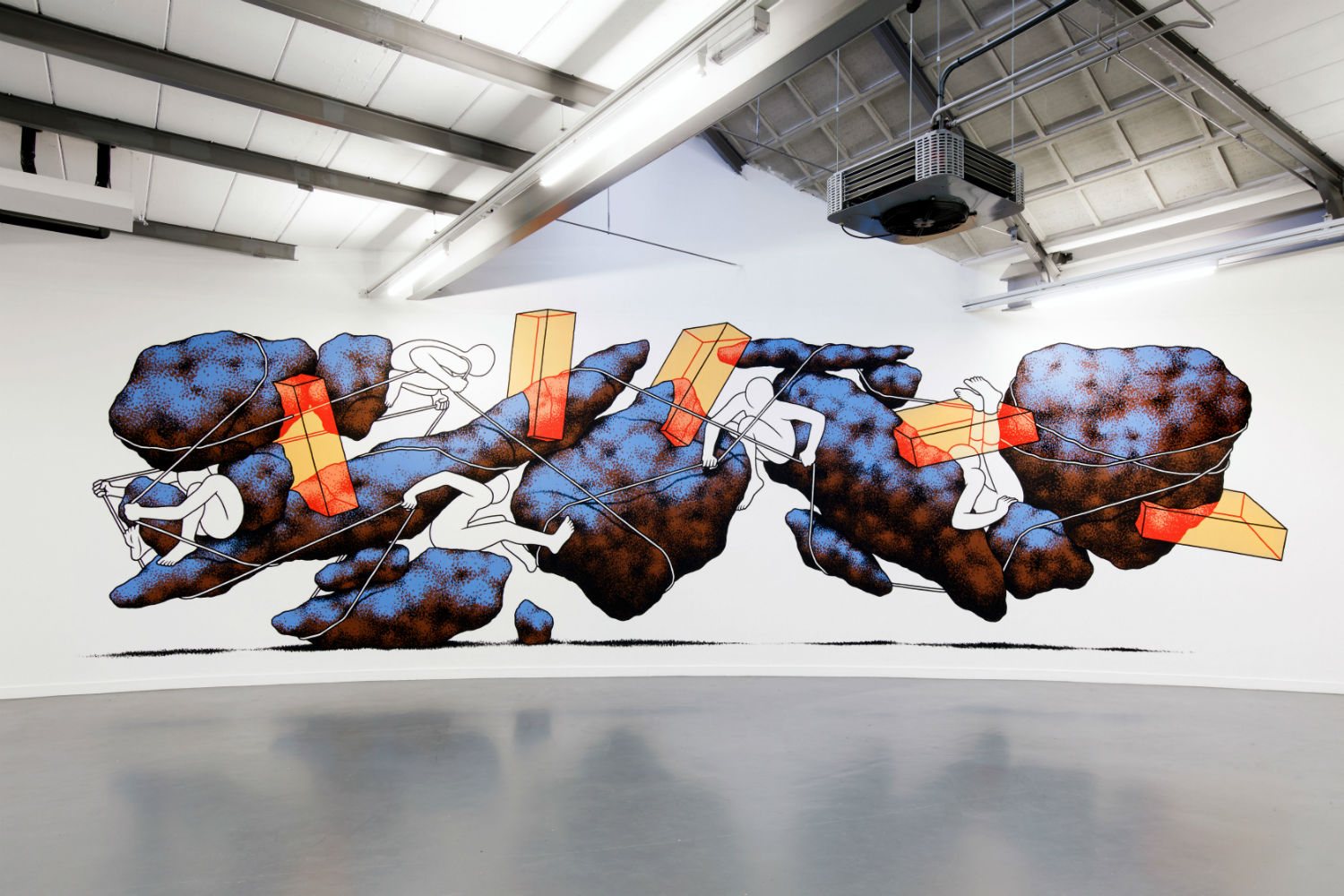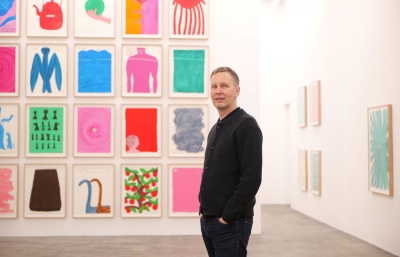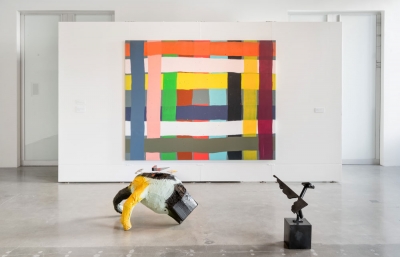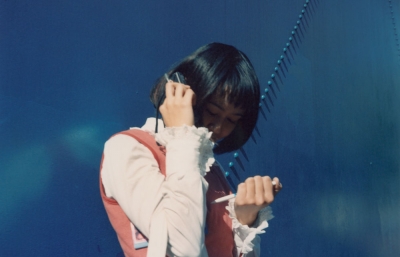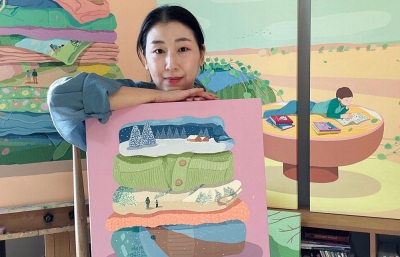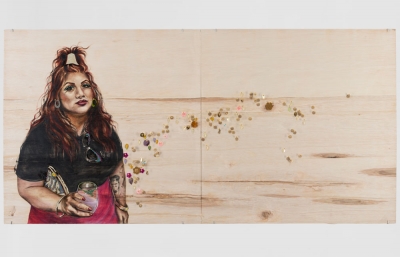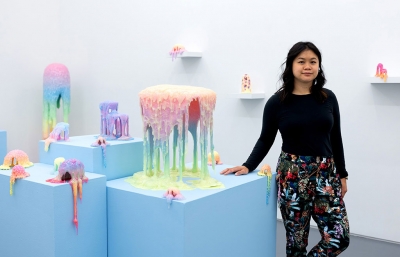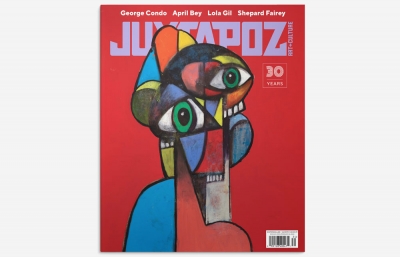If I were to start this interview by saying that Daan Botlek's characters haven’t changed much in the last few years, you might just stop right here. However, there is a caveat to all of this: instead of dramatic shifts in content, Botlek has chosen to explore new ideas and applications of his art to new surfaces, from walls to site-specific installation works.
In a sense, it’s as if his characters have exerted volition to find their own identities. The same impact he made with small, simple drawings a few years ago, he now achieves with life-size 3D installations that are playing with space, perspective, illusion and just generally messing with your understanding of both street art and sculpture. Over a bowl full of award-winning oliebollen in Rotterdam, Botlek and I and talked about his past, present and future work, as well as ideas and concepts. Actually, we talked a lot about concepts.
Read this feature and more in the April 2017 issue of Juxtapoz Magazine.
Sasha Bogojev: First things first, what's up with all the humans and boulders?
Daan Botlek: Actually, I just started with humans about nine years ago. Before that, I was doing much more elaborate work based on skills, colors, composition, more eye-candy stuff, but still with a bit of a twist. After a while, I got fed up with it because it's also a way to hide the image behind the skills. So I decided to focus on concepts and ideas instead. I broke with what I was doing previously, trying to reinvent myself, and ended up radically minimizing the tools and images I could use. I started with the basic human character, but without the face, without clothes, attributes or symbolism. The idea was to create work without context so each image can stand on its own.
What about the very limited color palette you've been using?
At that time, I had three color pens: black, red and green. I thought, "Okay, I’m just going to use these colors." I started playing with this human character, breaking it apart, using it as an object, stacking one on top of the other, and just looking for compositions, dynamics and interactions. This is when I started using colors, so the red became the inside of the character, the green became a transparent part of different dimensions, and I started involving geometrical objects to add the volume.

And what about the boulders?
I was painting on rocks way earlier as I always had some sort of fascination with them, but they came back in my work a bit later. When I work outside, it's important for me to find the way to interact with surroundings. Once I started getting more commission walls, I felt a lot of times that they are like blank paper and there is not much for me to work with. So I started using new elements to create a new environment that my characters can interact with. The basic set of elements are the transparent geometric shapes, rocks as solid, heavy, organic objects, and finally, ropes that can be tight or loose. With the combination of those, in relation to human characters, you can create a whole bunch of different settings.
Are you limiting yourself purposely?
Yeah, because I have to keep finding new solutions to create a satisfying image in the end. I need these limitations to find these solutions and to keep progressing. It was many years before I allowed myself to use other colors, or even elements that are making the work more "beautiful" or recognizable. My work wasn't about beauty but about being interesting and having a concept. But after all this time, I feel like I reached that moment where I can allow myself to make it beautiful again.
I feel like you can achieve almost the same impact with your small drawings as with your most recent installation, for example.
I'm really convinced that one can take something as small as a grain of sand and create a new universe with it. It's like a never-ending story idea. You can take something super minimal, thinking, "Okay, that's it," but there can be a whole world behind it. It's really interesting to stick with this and see how far you can push it. I feel like I reached the point where my work is fixed; it has proved itself, so I allow myself to use familiar images or even comment on things. Like the Overthinker image for example. I'd never use such a concept a few years ago because I felt it was to easy. Nowadays, I'm allowing myself to play more, try new things, and be more lighthearted about it, especially when doing my own projects.
What are some favorite works you've created?
Most of the time, those are pieces that opened new doors for me. Not career-wise, but more like, "Hey! This could be a whole new line of new stuff!" Like the piece I did in Oranjeboom village in Germany using portable LED lights, which opened a full spectrum of new possibilities. I still didn't get around to do it, but it's definitely there. Regular wall paintings I can do anywhere, but the ones pushing me to find these new ideas are definitely my favorite kind of works.

Do you consider yourself an artist, illustrator, or street artist? Do you have an opinion about that?
I think those terms are not related so much to the person doing the work but more to the people following it. For myself, I'm just an artist; I create things. I make stuff. For me, street art is stuff which is more engaged and getting in conversation with the neighborhood and the people passing by. Actually, because of commissions, I was able to start creating in places that have much more traffic and visibility. These settings make me feel obliged to get into conversation with the public or even express my opinion, which I don't normally do in my work.
Even though your work naturally invites observation and analysis.
It’s purposely simple, so it's easy for people to connect with. People can recognize everything in it at first and maybe go "Oh, that's nice," but then it quickly becomes, "What the hell am I looking at, actually?” So it looks very obvious at first, but is actually confusing, as it doesn't really make sense.
Do you think people enjoy that?
Some do but others really get annoyed by my work because they don't understand the concept. They think I don't know what I'm doing. Of course I know what I'm doing! If it was abstract work, people would easily accept that they have to find the meaning. But because it's very clear what’s in it, they expect the concept to be clear as well. This also has to do with people being used to public communication, which is directed to them—to teach, offer or tell them something.
Wasn't there a situation like that with one of the kids in India?
I was painting at the local school, and one of the boys kept coming and asking me what I was doing. I kept saying that I don't know what it's gonna be at the end. After few days, he got really upset and told me, "Why don't you wanna tell me what it is?" So I answered "Why don't you wanna tell me what you see?" Than he got it and started analyzing, so he figured it was a dog. I was super happy with that. Also, the teachers were very happy as the kids in India are not encouraged in critical thinking. So, the first few days, they were trying to find out from me what it was I was creating, and since there was no satisfying answer, they eventually started gathering in the schoolyard and discussing what it was. It was very nice to see this happen, as I like to be a catalyst of such public conversations.

Do you have any formal art education or anything along those lines?
I studied illustration at Willem De Kooning academy in Rotterdam, but soon it became clear for me that it wasn't the thing I wanted to do. I wanted to be somewhere in between the fine art and the applied arts, and there was no education for that.
Would you say that anything came from that education?
Well, the interesting story about my background is that, during the last two years of school, I worked a lot with a classmate who had completely different concepts and skills, but the mix was perfect and we had a great dynamic together. This was in 2004, so the early stage of the internet, and at some point, Wooster Collective named us as one of the top ten to watch out for. Suddenly, we started getting a lot of attention but realized we had different ideas about which direction to go, so we split up. It was a great introduction to the art world and it surely gave us a lot of confidence about our future work.
This is when you started making the work you're doing today?
This is when I decided to do my own concepts. They were including a lot of stories because I was obsessed with how visual language originated and evolved all the way from early wall paintings. So, over two years, I created my own stone age community with their own interaction, language, rituals and all. This ended up being so overwhelming, with so many stories, so much context, doing a book on this would probably be a lifelong task. Plus, it was clear only to me what was happening there. After a while, I decided to quit and start very basic and without context. And this is when I started doing what I’m doing today.

It's all been a straight line from there?
Well, not really. I actually took a break for almost five years shortly after starting again. I developed this anti-ego attitude towards the art world and the self promoting and branding that everyone was doing. I was really annoyed how things are often more about the name than the actual work. So I just looked away from it all. It also helped that I had a good start, so I felt like I could always go back if needed. I was all about "fuck this ego stuff." But after some time, I realized that not doing this because I was able to is actually the ultimate ego trip of them all! About five years ago, I began to miss drawing and creating, and luckily, a few online blogs and publications discovered my older works and started sharing them, so I was quickly back on track.
You never seem to do classic gallery shows though. Why is that?
Last year, I decided I don't want to do any gallery shows for a while, mostly because it doesn't really fit in my schedule and I don't produce the kind of work that can be shown or sold in such settings. Also, sometimes there is this tension with the galleries because their business is to sell stuff. And I don't need to sell my stuff. For me, it's more important to exchange ideas, inspire and get inspired. Of course, this is very idealistic and I do need to make some money, but I can do enough by making murals or selling some work online. The internet is my exhibition space and murals are in public space, so the classic gallery just doesn’t fit what I’m doing.
You were chosen recently as one of the four nominees for the 2016 Dolf Henkes Award. How did that happen?
I got a phone call and was told that I was nominated, and they asked if I'd accept the nomination. It's an award from the fine art world, and since I always had prejudice about it, it was a big surprise to get a recognition in that way. Hopefully this could open doors to the fine art world for the other areas of creative expression that were usually outside of it.
Was the main installation something you thought up especially for this exhibition, or was it a concept that you had for a while?
We've decided not to show my outdoor work because most of it is about location, and we can't bring that inside except as documentation. And also, three other artists had video art included in their work, so it would be too much to have another video there. I knew I wanted to do something with the space, and since the room was pretty simple without offering much to use, I just started from this little ledge on the side of the wall and had my characters appear from there. I had to choose the composition and direction, while making sure it wasn’t too big or small to be observed, but it all actually went pretty quick and easy from there.

Do you already have ideas for similar works in the future?
While making this, I kept thinking how cool would it be to have the whole space and expand the installation through the walls, the roof, to let it go on the outside facade, which would be visible through the skylights. I was really surprised how easy and fast it could be done, and I'd love to do it on a much bigger scale for festivals or such.
Other than the small puzzle-like works, would this installation be your first big step into the world of sculpture?
My first drawings looked like something that could work well as a sculpture, but I decided if I ever do that, it has to be big. I just never got around to it because making new ideas is easier. All you need is pen and paper. I'd definitely love to make more installations like this where I can expand the ideas and take them off the wall and inside the space.
What kind of things do you have planned for 2017?
There are some commission walls in the cards, and I'll be doing my own projects in abandoned places, but I'd like to take fewer things and take more time to be able to do them bigger and better. I'm most excited about having my own studio for the first time in so long. My stuff is still in boxes in our place in Berlin, and I'm never around there, so I'm really looking forward to finally settling down and hopefully doing some products, or work on my puzzle designs. I'm just afraid this would take all my time, so this is why I keep avoiding it.
----
Originally published in the April 2017 issue of Juxtapoz Magazine, on newsstands worldwide and in our web store.

